#anna christie 1929
Text
Oscar Nominee of All Time Tournament: Round 1, Group A
(info about nominees under the poll)
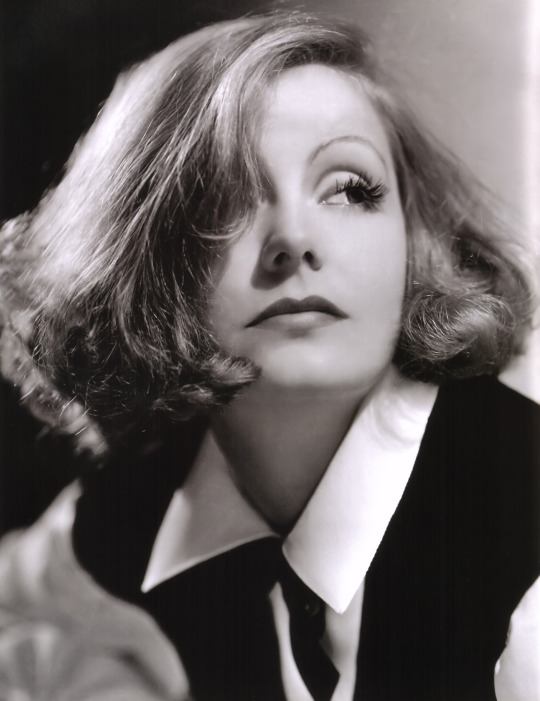

GRETA GARBO (1905-1990)
NOMINATIONS
Lead- 1929/30 for Anna Christie & Romance, 1937 for Camille, and 1939 for Ninotchka
JANET SUZMAN (1939-)
NOMINATIONS
Lead- 1971 for Nicholas and Alexandra
#actors#oscars#academy awards#film#greta garbo#janet suzman#oscar nominees#anna christie 1929#romance 1929#camille 1937#ninotchka#nicholas and alexandra 1971#nomineees group a#nominees group a polls
9 notes
·
View notes
Text



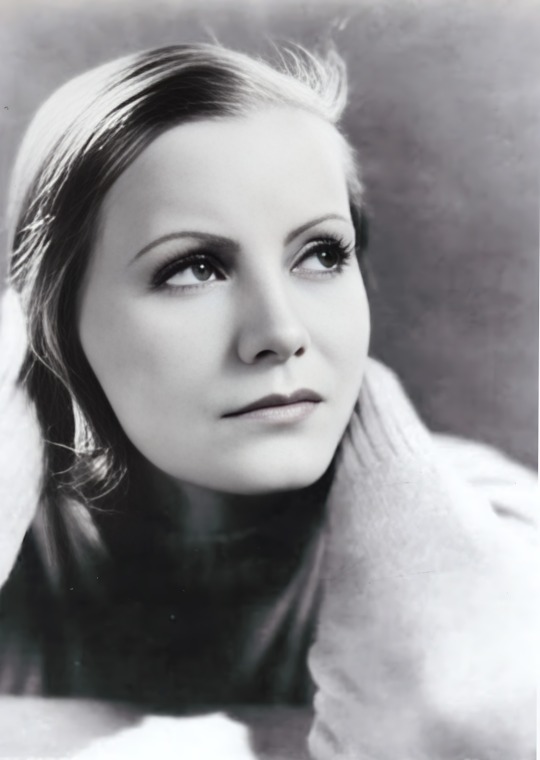
Greta Garbo "Anna Christie" by Clarence Sinclair Bull, 1929
#Greta Garbo “Anna Christie” by Clarence Sinclair Bull#1929#Clarence Sinclair Bull#Greta Garbo#Anna Christie
13 notes
·
View notes
Text
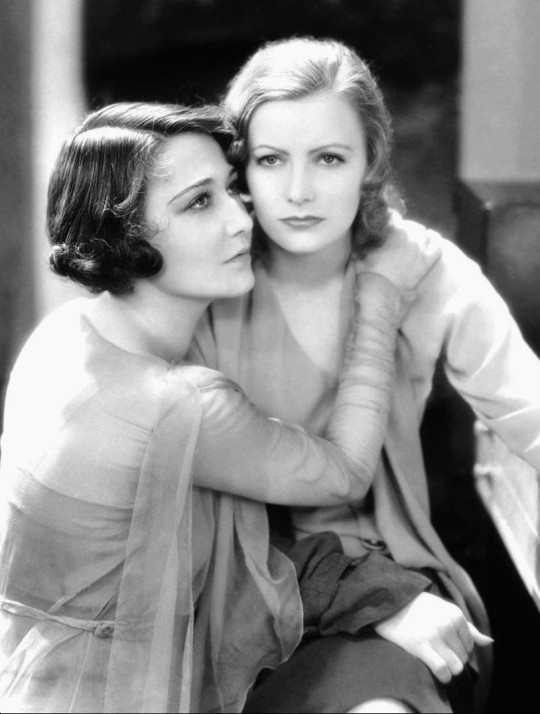
Dorothy Sebastian and Greta Garbo in The Single Standard, 1929
“Mentally, she is very bright. She is stimulating to talk to. She enjoys a good joke, even when it is on herself, which is, after all, the acid test for a sense of humor.
From a professional angle, I believe Greta is born with the gift of genius and that as a film star she hasn’t yet scratched the surface of the glorious future that awaits her. I think her role in Anna Christie came closest to showing us what the real talents of Greta Garbo can do.”
-Dorothy Sebastian, Screenland, June 1931
86 notes
·
View notes
Text
The Best Books
The list is made from an academic point of view. More books may be added or any book may be taken out of the list at anytime.
Books that enlightened, outraged, provoked and comforted us
Pride and Prejudice by Jane Austen, 1813
Emma by Jane Austen, 1815
The Count of Monte Cristo by Alexandre Dumas, 1844
Wuthering Heights by Emily Bronte, 1847
Vanity Fair by William Makepeace Thackeray, 1848
Great Expectations by Charles Dickens, 1860
Les Miserables by Victor Hugo, 1862
Crime and Punishment by Fyodor Dostoyevsky, 1866
Little Women by Louisa May Alcott, 1868
Middlemarch: A Study of Provincial Life by George Eliot, 1874
Anna Karenina by Leo Tolstoy, 1877
Adventures of Huckleberry Finn by Mark Twain, 1884
Germinal by Émile Zola, 1885
The Short Stories of Anton Chekhov by Anton Chekhov, 1888
The Ambassadors by Henry James, 1903
In Search of Lost Time by Marcel Proust, 1913
Dubliners by James Joyce, 1914
The Mysterious Stranger by Mark Twain, 1916
Ulysses by James Joyce, 1922
The Magic Mountain by Thomas Mann, 1924
An American Tragedy by Theodore Dreiser, 1925
The Great Gatsby by F. Scott Fitzgerald, 1925
To the Lighthouse by Virginia Woolf, 1927
Coming of Age in Samoa by Margaret Mead, 1928
All Quiet on the Western Front by Erich Remarque, 1929
The Sound and the Fury by William Faulkner, 1929
The Autobiography of Alice B. Toklas by Gertrude Stein, 1933
Tender is the Night by F. Scott Fitzgerald, 1934
Gone With the Wind by Margaret Mitchell, 1936
Death on the Nile by Agatha Christie, 1937
Out of Africa by Isak Dinesen, 1937
Their Eyes Were Watching God by Zora Neale Hurston, 1937
The Grapes of Wrath by John Steinbeck, 1939
Romola by George Eliot, 1940
Black Boy by Richard Wright, 1945
Hiroshima by John Hersey, 1946
Robinson Crusoe by Daniel Defoe, 1946
A Streetcar Named Desire by Tennessee Williams, 1947
Under the Volcano by Malcolm Lowry, 1947
The Sheltering Sky by Paul Bowles, 1949
The Catcher in the Rye by J. D. Salinger, 1951
Invisible Man by Ralph Ellison, 1952
Lord of the Flies by William Golding, 1954
The Sun Also Rises by Ernest Hemingway, 1954
Lolita by Vladimir Nabokov, 1955
Notes of a Native Son by James Baldwin, 1955
Our Man in Havana by Graham Greene, 1958
The Civil War by Shelby Foote, 1958
Raise High the Roof Beam, Carpenters and Seymour: An Introduction by JD Salinger, 1959
Rabbit, Run by John Updike, 1960
Where Angels Fear to Tread by E. M. Forster, 1960
The Death and Life of Great American Cities by Jane Jacobs, 1961
The Making of the President by Theodore H. White, 1961
Pale Fire by Vladimir Nabokov, 1962
The Spy Who Came in from the Cold by John le Carre, 1963
A Moveable Feast by Ernest Hemingway, 1964
The Autobiography of Malcolm X by Malcolm X, 1965
Manchild in the Promised Land by Claude Brown, 1965
Against Interpretation, and Other Essays by Susan Sontag, 1966
In Cold Blood by Truman Capote, 1966
One Hundred Years of Solitude by Gabriel Garcia Marquez, 1967
The American Cinema by Andrew Sarris, 1968
The Double Helix by James Watson, 1968
The Electric Kool_Aid Acid Test by Tom Wolfe, 1968
I Know Why the Caged Bird Sings by Maya Angelou, 1969
Slaughterhouse-Five by Kurt Vonnegut, 1969
The French Lieutenant’s Woman by John Fowles, 1969
Are You There God? It’s Me Margaret by Judy Blume, 1970
Ball Four by Jim Boutton, 1970
The Complete Stories of Flannery O’Connor, 1971
The Best and the Brightest by David Halberstam, 1972
The Politics of Nonviolent Action by Gene Sharp, 1973
All The President’s Men by Bob Woodwad and Carl Bernstein, 1974
The Power Broker by Robert A. Caro, 1974
Ragtime by E. L. Doctorow, 1975
Sociobiology by Edward O. Wilson, 1975
The Executioner’s Song by Norman Mailer, 1979
The Clan of the Cave Bear by Jean M. Auel, 1980
Follow The River by James Alexander Thom, 1981
Psychoanalysis: The Impossible Profession by Janet Malcolm, 1981
The Fractal Geometry of Nature by Benoit Mandelbrot, 1982
The Last Lion: Winston Spencer Churchill by William Manchester, 1983
The Unbearable Lightness of Being by Milan Kundera, 1984
The Center of the Cyclone by John Lilly, 1985
Great and Desperate Cures by Elliott Valenstein, 1986
Maus by Art Spiegelman, 1986
The Making of the Atomic Bomb by Richard Rhodes, 1986
And the Band Played On by Randy Shilts, 1987
Beloved by Toni Morrison, 1987
The Closing of the American Mind by Allan Bloom, 1987
A Brief History of Time by Stephen Hawking, 1988
Battle Cry of Freedom: The Civil War Era by James M. McPerson, 1988
The Society of Mind by Marvin Minsky, 1988
Summer’s Lease by John Mortimer, 1989
A Prayer For Owen Meany by John Irving, 1989
A Soldier of the Great War by Mark Helprin, 1991
Mortal Questions by Thomas Nagel, 1991
PIHKAL by Alexander and Ann Shulgin, 1991
Lonely Hearts of the Cosmos by Dennis Overbye, 1991
The Six Wives of Henry VIII by Alison Weir, 1991
Band of Brothers by Stephen E. Ambrose, 1992
The Talented Mr Ripley by Patricia Highsmith, 1992
The English Patient by Michael Ondaatje, 1993
Dreams from My Father by Barack Obama, 1995
Montana Sky by Nora Roberts, 1996
Tuesdays with Morrie: An Old Man, a Young Man, and Life’s Greatest Lesson by Mitch Albom, 1997
War Before Civilization by Lawrence Keeley, 1997
How the Mind Works by Steven Pinker, 1997
A Walk in the Woods by Bill Bryson, 1998
In the Name of Eugenics by Daniel Kevles, 1998
Who Moved My Cheese? by Spencer Johnson, 1998
Interpreter of Maladies by Jhumpa Lahiri, 1999
A Heartbreaking Work of Staggering Genius by Dave Eggers, 2000
Nonzero by Robert Wright, 2000
Chocolat by Joanne Harris, 2000
The Secret Life of Bees by Sue Monk Kidd, 2001
The Illusion of Conscious Will by Daniel Wegner, 2002
Atonement by Ian McEwan, 2003
The Kite Runner by Khaled Hosseini, 2003
The Known World by Edward P. Jones, 2003
Gilead by Marilynne Robinson, 2004
My Sister’s Keeper by Jodi Picoult, 2004
Portofino: A Novel (Calvin Becker Trilogy) by Frank Schaeffer, 2004
Never Let Me Go by Kazuo Ishiguro, 2005
The Book Thief by Marcus Zusak, 2005
The Girl With a Dragon Tattoo by Stieg Larsson, 2008
Lords of Finance: The Bankers Who Broke The World, 2009
Unbroken: A World War II Story of Survival, Resilience and Redemption by Laura Hillenbrand, 2010
Washington: A Life by Ron Chernow, 2010
Orientation: And Other Stories by Daniel Orozco, 2011
Books that inspired debate, activism, dissent, war and revolution
The Torah
Bhagavad Gita
I Ching (Classic of Changes) by Fu Xi
Tao Te Ching by Lao Tzu
The Summa Theologica of St. Thomas Aquinas, 1266
The Divine Comedy by Dante Alighieri, 1321
Don Quixote by Miguel de Cervantes, 1605
Ethics by Baruch de Spinoza, 1677
Pilgrim’s Progress by John Bunyan, 1678
Candide by Voltaire, 1759
Confessions by Jean-Jacques Rousseau, 1781
Critique of Pure Reason by Immanuel Kant, 1781
Democracy in America by Alexis de Tocqueville, 1835
A Christmas Carol by Charles Dickens, 1843
Moby-Dick by Herman Melville, 1851
Uncle Tom’s Cabin by Harriet Beecher Stowe, 1852
Walden (Life in the Woods) by Henry David Thoreau, 1854
Madame Bovary by Gustave Flaubert, 1857
Experiments on Plant Hybridization by Gregor Mendel, 1866
War and Peace by Leo Tolstoy, 1869
Thus Spoke Zarathustra by Friedrich Nietzsche, 1883
Arabian Nights by Andrew Lang, 1898
The Ragged Trousered Philanthropists by Robert Tressell, 1914
Relativity: The Special and General Theory by Albert Einstein, 1916
Psychological Types by Carl Jung, 1921
Mein Kampf (My Struggle or My Battle) by Adolf Hitler, 1925
Der Process (The Trial) by Franz Kafka, 1925
The Tibetan Book of the Dead by Karma-glin-pa (Karma Lingpa), 1927
Brave New World by Aldous Huxley, 1932
The General Theory of Employment Interest and Money by John Maynard Keynes, 1936
The Big Book by Alcoholics Anonymous, 1939
Being and Nothingness by Jean-Paul Sartre, 1943
The Little Prince by Antoine de Saint-Exupery, 1943
The Road To Serfdom by Friedrich von Hayek, 1944
Animal Farm by George Orwell, 1945
Survival in Auschwitz: The Nazi Assault on Humanity by Primo Levi, 1947
The Diary of a Young Girl by Anne Frank, 1947
Nineteen Eighty-Four by George Orwell, 1949
The Second Sex by Simone de Beauvoir, 1949
The Origins of Totalitarianism by Hannah Arendt, 1951
Things Fall Apart by Chinua Achebe, 1958
To Kill a Mockingbird by Harper Lee, 1960
Guerilla Warfare by Che Guevarra, 1961
Capitalism and Freedom by Milton Friedman, 1962
Silent Spring by Rachel Carson, 1962
The Structure of Scientific Revolutions by Thomas Kuhn, 1962
Quotations from Chairman Mao Tse-Tung (The Little Red Book) by Mao Zedong, 1964
Unsafe at Any Speed by Ralph Nader, 1965
Catch 22 by Joseph Heller, 1969
The Female Eunuch by Germaine Greer, 1970
Zen and the Art of Motorcycle Maintenance by Robert M. Pirsig, 1974
The Normal Heart by Larry Kramer, 1987
The Alchemist by Paulo Coelho, 1988
The Vagina Monologues by Eve Ensler, 1995
Harry Potter and the Philosopher’s Stone by J. K. Rowling, 1997
Books that shook civilization, changed the world
The Holy Bible
The Qur’an
The Analects of Confucius
The Iliad and The Odyssey by Homer
The Histories by Herodotus, 440 BC
The Republic by Plato, 380 BC
The Kama Sutra (Aphorisms on Love) by Vatsyayana
On the Shortness of Life by Lucius Annaeus Seneca (The Younger), 62
Geographia by Ptolemy, 150
Meditations by Marcus Aurelius, 160
Confessions by St. Augustine, 397
The Canon of Medicine by Avicenna, 1025
Magna Carta, 1215
The Inner Life by Thomas a Kempis, 1400’s
The Canterbury Tales by Geoffrey Chaucer, 1478
The Prince by Niccolo Machiavelli, 1532
On Friendship by Michel de Montaigne, 1571
The King James Bible by William Tyndale et al, 1611
The First Folio by William Shakespeare, 1623
Principia Mathematica by Isaac Newton, 1687
A Tale of a Tub by Jonathan Swift, 1704
Encyclopaedia or a Systematic Dictionary of the Sciences, Arts and Crafts, 1751
A Dictionary of the English Language by Samuel Johnson, 1755
Patent Specification for Arkwright’s Spinning Machine by Richard Arkwright, 1769
Common Sense by Thomas Paine, 1776
The History of the Decline and Fall of the Roman Empire by Edward Gibbon, 1776
The Wealth of Nations by Adam Smith, 1776
The Social Contract by Jean-Jacques Rousseau, 1762
On the Abolition of the Slave Trade by William Wilberforce, 1789
Rights of Man by Thomas Paine, 1791
A Vindication of the Rights of Woman by Mary Wollstonecraft, 1792
On the Pleasure of Hating by William Hazlitt, 1826
Experimental Researches in Electricity by Michael Faraday, 1839, 1844, 1855
The Communist Manifesto by Karl Marx and Friedrich Engels, 1848
On the Suffering of the World by Arthur Schopenhauer, 1851
Leaves of Grass by Walt Whitman, 1855
On Liberty by John Stewart Mill, 1859
On the Origin of Species by Charles Darwin, 1859
The Rules of Association Football by Ebenezer Cobb Morley, 1863
Das Kapital (Capital: Critique of Political Economy) by Karl Marx, 1867
On Art and Life by John Ruskin, 1886
The War of the Worlds by H. G. Wells, 1898
The Interpretation of Dreams by Sigmund Freud, 1899
The Jungle by Upton Sinclair, 1906
Why Am I So Wise by Friedrich Nietzsche, 1908
Married Love by Marie Stopes, 1918
Lady Chatterly’s Lover by D. H. Lawrence, 1928
A Room of One’s Own by Virginia Woolf, 1929
Civilization and its Discontents by Sigmund Freud, 1930
Why I Write by George Orwell, 1946
30 notes
·
View notes
Text
Greta Garbo, the “Furious Lesbian,” and a Classic Hollywood Love Triangle
In this exclusive excerpt from her new biography of the silent star, author Lois Banner explores the period in the early 1930s when Garbo was entangled with both the acting coach Salka Viertel and the glamorous writer Mercedes de Acosta.
BY LOIS BANNER
SEPTEMBER 6, 2023

GETTY IMAGES
reta Garbo began her acting career in her native Sweden and moved to Hollywood in 1925, where she quickly became one of the industry’s most beloved stars. She was in a relationship with her frequent co-star John Gilbert, who also served as her acting coach. At the dawn of the 1930s their relationship was over, but Garbo’s star remained on the rise.
After the break with John Gilbert, Garbo had no acting coach. In April 1930, a year after she and Gilbert parted, she found a new coach at a party at the director Ernst Lubitsch’s home, a center for the Hollywood German community, where she met Salka Viertel, a Berlin stage actress. Garbo and Salka spent most of the evening talking on the terrace. Salka, who was sixteen years older than Garbo, found her “hypersensitive, although of a steely resistance,” while her opinions about people were “just, sharp, and objective.”
Salka had come to Hollywood in 1928 from Berlin, at the age of thirty-one, with her husband, Berthold, and their three sons, David, Peter, and Christopher. Fox studios had hired Berthold, a writer and director known in Germany. Salka had been a successful actress in Berlin, but she was rarely cast in roles in Hollywood films; she was, she said, “too old” and “not beautiful enough.”

Garbo and Salka Viertel in a scene of the German version of Anna Christie (1930).BY METRO-GOLDWYN-MAYER/DE CARVALHO COLLECTION/GETTY IMAGES.
Salka had a sensual glow. For several years she had an affair with her next-door neighbor, Oliver Garrett, a successful Hollywood screenwriter, who helped her navigate the ebbs and flows of Hollywood. She then had a long affair with Gottfried Reinhardt, the son of Max Reinhardt, the Berlin theatrical impresario. Gottfried was twenty years younger than she, but he was stocky, with a solemn manner, and they didn’t seem that different in age. The Viertels had an open marriage, and Berthold was so often in Europe and with other women that Gottfried often lived in her home and functioned as her husband. He worked as an assistant producer at MGM.
In 1929 the Viertels moved to a large house in Santa Monica Canyon, near the beach. Salka held Sunday afternoon get-togethers, with coffee and homemade cake, conversation, ping-pong, and walks on the beach. Garbo didn’t always attend Salka’s salons, partly because of attacks of shyness, but also because eventually she sometimes went to other Hollywood gatherings—at Vicki Baum’s home in Pacific Palisades, for example, a few miles up the coast from Santa Monica, or at director George Cukor’s home in the Hollywood Hills. Baum, from Berlin, wrote the novel on which Grand Hotel was based. Cukor, who was homosexual, held luncheons for gender-crossing friends. His home was a showpiece, with six acres of gardens terraced up a hill.
Salka often joined Garbo in hiking in the hills or swimming in the ocean early in the morning. Following Swedish practice, they swam in the nude. When together, they discussed films, the theater, literature, and their lives. Both Garbo and Salka wanted to return to Europe, but they felt they couldn’t. Garbo had her screen career and her drive to be financially independent, while Salka and the boys were dependent on Berthold, still employed by Hollywood studios. Jacques Feyder suggested that Salka play Marthy, the prostitute in Anna Christie, in MGM’s German version of the film, which he was to direct, and Garbo agreed. She and Salka grew close; Salka was the mother Garbo wanted; Garbo was the daughter in Salka’s family of males.
Fred Zinnemann, Berthold’s assistant, later an eminent Hollywood director, described Salka as “one of the world’s most generous and opinionated women,” and she dominated Garbo. At their meetings, Salka was the star and Garbo the audience. After reading a biography of Sweden’s Queen Christina, Salka suggested to Garbo that she play the queen in a biopic. Garbo agreed—and suggested that Salka write the screenplay. Salka wasn’t a writer, but Garbo knew that, at her request, Thalberg would partner Salka with MGM’s best writers. Garbo gave Salka a career—as a writer and an acting coach. Salka participated in writing the screenplays for Queen Christina and most of Garbo’s subsequent films. Deeply impressed by Salka, Garbo developed an abiding love for her. But Salka was never certain how she felt about Garbo.
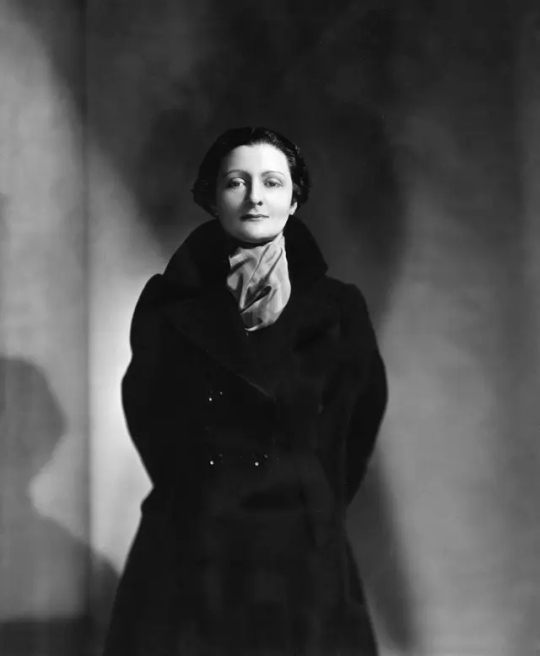
Mercedes de AcostaBY NICKOLAS MURAY/ULLSTEIN BILD/GETTY IMAGES.
In the summer of 1931, while Garbo was making Susan Lenox: Her Fall and Rise, Salka was persuaded to introduce Garbo to Mercedes de Acosta, who had come to Hollywood to write a screenplay for Pola Negri—and to seduce Garbo. Mercedes had heard through the lesbian grapevine that Garbo wasn’t a lesbian, but she could easily become one. De Acosta, openly lesbian, had a reputation for skill as a lover, and she was on a mission to turn prominent actresses into lesbians. It’s not surprising that she wanted to meet Garbo, but Salka was worried about what might happen if that meeting took place.
Mercedes de Acosta, born to parents descended from the Spanish nobility, was raised in a wealthy section of New York’s West Side. She met celebrities through her sister Rita Lydig. Eighteen years older than Mercedes, Rita was a fabled beauty, a leader in New York high society, and a reformer who worked for women’s suffrage and birth control, as well as labor rights. The de Acosta family once had money, but Rita’s and Mercedes’s money came from their wealthy husbands.
Rita introduced Mercedes to her famous friends: the actress Sarah Bernhardt, the sculptor Auguste Rodin, Jack and Ethel Barrymore of the famed Barrymore acting family, and others. Raised a Catholic, Mercedes attended Catholic schools. In 1914 Vogue featured her as a New York debutante, and in 1920 she married Abram Poole, a New York society painter. She followed Rita into feminism, working for women’s suffrage and then for the Lucy Stone League, formed to persuade women to keep their maiden names after marriage, following the example of Lucy Stone, a leader in the nineteenth-century U.S. women’s movement.
Like Rita, Mercedes wore distinctive clothing, but she had her own style. She often wore capes, tricorne hats, and pointed shoes with silver buckles on them, looking like a pirate. She was also known for wearing a dark coat fitted at the waist, with wide lapels and a full skirt, designed by the Paris couturier Paul Poiret. Garbo liked the coat so much that she had a copy of it made for her. Mercedes dyed her hair black, painted her face white, and wore blood-red lipstick—prompting some people to call her “Madame Dracula.”
Mercedes wore only black and white clothes, so Garbo and Salka called her “Black and White.” Aldous Huxley described her as “a small but most exquisite woman, both in features and figure, and in the manner of her dress.” She was five feet four inches tall. Close to Cecil Beaton, she provided him with information about Garbo to use in his writing about her, until he and Garbo became close friends in the late 1940s.
Mercedes lived a dramatic life, engaging in what Cecil Beaton called “glorious enthusiasms.” She also had periods of deep depression. Until she was seven and saw the male sex organ, she thought she was a boy. Discovering her mistake devastated her, until she formed romantic friendships with girls and studied ancient Greek ideas of sex. She interpreted those ideas as suggesting that everyone has a masculine and a feminine side. She took up lesbianism as a cause. Cecil Beaton called her “a furious lesbian.”
Mercedes studied Hindu and Buddhist texts and followed Eastern mystics; her knowledge of Eastern religions was part of her attraction to Garbo, who continually looked for a spiritual path and never seemed to find one. And Mercedes always knew about the latest healers and remedies. She consulted Dr. Henry Bieler, who promoted vegetarianism. Not long after she met Mercedes, Garbo consulted Bieler and became a vegetarian.
Mercedes knew the two great dramatic actresses of the turn of the twentieth century: Sarah Bernhardt and Eleonora Duse. She had had affairs with prominent female performers, including Isadora Duncan, a founder of modern dance, who promoted dress reform; the English actress Eva La Gallienne, with whom she exchanged wedding rings; and the Russian actress Alla Nazimova. When Nazimova came to Hollywood in 1916 to act in films, she formed a Sapphic circle, which some say was called “the sewing circle.” Isadora Duncan wrote passionate poems to Mercedes, extolling her sexual ability and writing paeans to her beautiful white hands.
Once Salka introduced Mercedes to Garbo in July 1931, Garbo initially fell for this aristocrat, with her tales of famous friends, knowledge of Eastern religions, and skill at sex. After finishing Susan Lenox that summer, Garbo took Mercedes to a cabin on an island in a lake in the High Sierras, where they swam, caught fish, talked, and began an affair. Mercedes was known for her sexual skill and Garbo for “the unbounded freedom of her life.”
After her trip to the High Sierras with Mercedes, Garbo displayed deep feelings for Salka, which suggests that the Sierra trip was a failure, that she was comparing Salka and Mercedes as friends and lovers, or that she was forming a triangle with the two of them. On September 18, which was Garbo’s birthday, she seduced Salka, who described what happened in a letter to Berthold—her confidante as well as her husband. Greta decorated her house with white gardenias, a symbol of femininity and of secret love. She served Champagne and played Sapphic songs on the gramophone. It was, according to Salka, “a gigantic temptation apparatus.” She concluded: “So we were together—it was harmonious and beautiful.”
By the late fall, Salka’s infatuation with Garbo had dissipated for a time, as Garbo became demanding. She was filming Mata Hari and spending time with Mercedes, in the first flush of their romance. Then, looking at Garbo one day, Salka realized that not only did she slouch but she also had a hump on her back. Salka wrote to Berthold, who was in New York, about the hump, but he replied that she should forget it because Garbo had influence in Hollywood and could damage his career. Salka stayed with Garbo as a close friend and mentor but kept her at a distance by having affairs with men, first with Oliver Garrett and then with Gottfried Reinhardt. After the episode of sex in 1931 between Garbo and Salka, there is no further evidence of sexual relations between them.

Greta Garbo as Anna Karenina and John Gilbert as Alexei Vronsky in a scene from the silent movie Love (1927). FROM BETTMANN/GETTY IMAGES.
Even before Mercedes appeared in Garbo’s life in the summer of 1931, there were references to Garbo’s presumed lesbianism in the Hollywood trade journals and in movie magazines. In 1929, Variety’s review of Garbo’s movie The Single Standard slyly referred to Garbo’s free love views. In January 1931, in a review of Garbo’s movie Inspiration, a Variety writer called her “one of the strangest personalities of all the freaks or odd ones that have littered Hollywood for years.” And Mercedes persuaded Garbo to become more open about her masculinity. The Hollywood Reporter, Hollywood’s first tabloid, was launched in 1930. On August 21, 1931, a month after Mercedes and Garbo met, the tabloid noted that “Greta Garbo has a new love.” On September 23, 1931, the tabloid referred to “an ambidextrous foreign star.” (“Ambidextrous” means being able to use either hand for tasks; it was then a common circumlocution for lesbians, homosexuals, and bisexuals.) The tabloid also referred to “the two Garbos.”
But Garbo was ambivalent about Mercedes. After Salka, in her subtle, poetic way, informed Garbo that they could be close friends, but not lovers, Garbo turned to Mercedes for sex. That action unleashed Mercedes’s obsessive nature, expressed in constant demands for deep expressions of love. After several months, Garbo fled to New York to get away from her. When she returned to Hollywood after a month away, she found Mercedes living in a house near hers. Ever after, when Garbo moved, Mercedes moved to a nearby house. Garbo wrote to Hörke Wachtmeister, a close friend in Sweden, that Mercedes made her nervous. She also disliked Mercedes’s love of gossip, and she was incensed when she learned that Mercedes told Cecil Beaton about her doings, which he then used in writing about her.
Mercedes and Salka didn’t like each other, which isn’t surprising. Mercedes didn’t attend Salka’s salons; she formed one of her own, which may have been a continuation of Alla Nazimova’s “sewing circle.” She also had an affair with Marlene Dietrich, Garbo’s major Hollywood rival. Garbo eventually forgave her this breach of faith; free-love principles permitted it and forbade jealousy. And Mercedes was lavish in spending on Garbo; she once had an elaborate gate built overnight around her mansion when Garbo mentioned a need for it.
Mercedes’s husband divorced her in 1935 and married his mistress, but he didn’t cut off his large stipend to Mercedes for years. It was her major source of income, financing the mansions she rented and her largesse to Garbo. But she was indomitable. When the stipend ended, she managed to find jobs editing and writing for small magazines, moving between New York and Paris. She became friends with John Lennon and Yoko Ono and was often a guest at their Christmas celebrations. But when she died in 1968, she was destitute.
Garbo didn’t permanently break with Mercedes until her autobiography was published in 1960. Even though Mercedes hid their affair in a cloud of circumlocutions in the memoir, she included a photo she had taken of a topless Garbo on the island in the High Sierras. And her description of her research methods for the autobiography must have alarmed the perfectionist and secretive Garbo. Mercedes’s major source, she stated, was her memory. She had kept neither a diary nor a datebook, and when she wrote her appointments down on scraps of paper, she promptly lost them. She did keep letters written to her and other memorabilia; they are in her collection in the Rosenbach Museum in Philadelphia. The biographer can figure out a lot about their relationship from that collection, but far from all of it.
From IDEAL BEAUTY: The Life and Times of Greta Garbo by Dr. Lois W. Banner. Copyright © 2023 by Dr. Lois W. Banner. Excerpted by permission of Rutgers University Press.
3 notes
·
View notes
Text
Two by Jacques Feyder

Cécile Guyon, Françoise Rosay, and Jean Forest in Gribiche (Jacques Feyder, 1926)
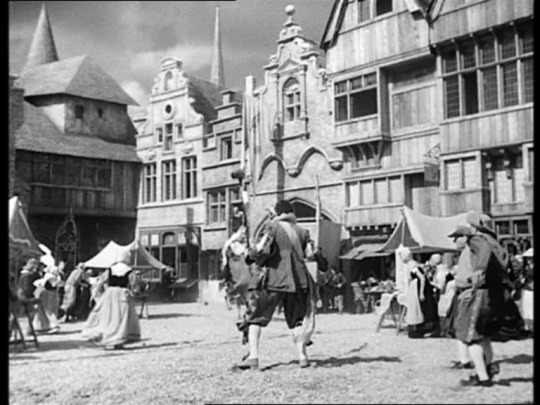
Carnival in Flanders (Jacques Feyder, 1935)
Belgian-born director Jacques Feyder established his career in France during the silent era, and went to work for MGM in Hollywood in 1929 to direct Greta Garbo in her last silent movie, The Kiss. But Hollywood was more interested in having him direct foreign-language versions of movies after talkies came in: Before dubbing became a common practice, films were often made in two versions, one in English for the American and British markets, others in various languages for overseas audiences. So Feyder was tasked with making a German-language version of Garbo's first talkie, Anna Christie (1931), though he also made two movies starring Ramon Novarro, Daybreak (1931) and Son of India (1931). Disillusionment with Hollywood sent him back to France, where he made his most famous film, Carnival in Flanders, in 1935. The rise of the Nazis, who banned that film after they invaded France in 1940, caused Feyder and his wife, Françoise Rosay, who starred in many of his movies, to move to Switzerland, where his career stalled and he died, only 62, in 1948. After the New Wave filmmakers began to dominate French film, Feyder's reputation began to wane: François Truffaut said of Carnival in Flanders that it represented a tendency to make everything "pleasant and perfect," As a result, David Thomson has said, "Feyder may be unfairly neglected today just as once he was injudiciously acclaimed."
Gribiche (Jacques Feyder, 1926)
Cast: Jean Forest, Rolla Norman, Françoise Rosay, Cécile Guyon, Alice Tissot. Screenplay: Jacques Feyder, based on a novel by Frédéric Boutet. Cinematography: Maurice Desfassiaux, Maurice Forster. Production design: Lazare Meerson.
The young actor Jean Forest had been discovered by Feyder and his wife, Françoise Rosay, and he starred in three films for the director, of which this was the last. It's a peculiar fable about charity. Forest plays Antoine Belot, nicknamed "Gribiche," who sees a rich woman, Edith Maranet (Rosay), drop her purse in a department store and returns it to her, spurning a reward. Edith is a do-gooder full of theories about "social hygiene." Impressed by the boy's honesty, Edith goes to his home, a small flat above some shops, where he lives with his widowed mother, Anna (Cécile Guyon), and proposes that she adopt Gribiche and educate him. Anna is reluctant to give up the boy, but Gribiche, knowing that Anna is being courted by Phillippe Gavary (Rolla Norman), and believing that he stands in the way of their marriage, agrees to the deal. When her rich friends ask about how she found Gribiche, Edith tells increasingly sentimental and self-serving stories -- dramatized by Feyder -- about the poverty in which she found him and his mother. But the boy is unhappy with the cold, sterile environment of Edith's mansion and the regimented approach to his education, and on Bastille Day, when the common folk of Paris are celebrating in what Edith regards as "unhygienic" ways, he finds his way back to his mother's home. Edith is furious, but eventually is persuaded to see reality and agrees to let him live with Anna and Phillippe, who have married, while she pays for his education. The whole thing is implausible, but the performances of Forest and Rosay, and especially the production design by Lazare Meerson, make it watchable and occasionally quite charming.
Carnival in Flanders (Jacques Feyder, 1935)
Cast: Françoise Rosay, André Alerme, Jean Murat, Louis Jouvet, Micheline Chierel, Lyne Clevers Bernard Lancret. Screenplay: Bernard Zimmer, Jacques Feyder, based on a story by Charles Spaak. Cinematography: Harry Stradling Sr. Production design: Lazare Meerson. Film editing: Jacques Brillouin. Music: Louis Beydts.
Feyder's best-known film is something of a feminist fable, a kind of inversion of Lysistrata, in which the women of Boom, a village in 17th century Flanders that is occupied by the Spanish save the town from the pillage and plunder that the men of the village expect. Françoise Rosay plays the wife of the burgomaster (André Alerme), who holes up in his house, pretending to have died. The other officials of the town likewise sequester themselves. But the merry wives of Boom decide to wine, dine, and otherwise entertain the occupying Spaniards. It's all quite saucily entertaining, though undercut by a tiresome subplot (suspiciously reminiscent of that in Shakespeare's own play about merry wives) involving the burgomaster's daughter (Micheline Chierel) and her love for the young painter Julien Brueghel (Bernard Lancret), of whom the burgomaster disapproves. Again, Rosay's performance is a standout, as is Lazare Meerson's design: The village, with its evocation of the paintings of the Flemish masters, was created in a Paris suburb, with meticulous attention to detail, including the men's unflattering period costumes, designed by Georges K. Benda. The cinematography is by the American Harry Stradling Sr., who built his reputation in Europe before returning to Hollywood.
3 notes
·
View notes
Text
The complete list of films featured on this blog’s 2023 “31 Days of Oscar” marathon
Hello everyone,
Thank you once more for allowing me to present the annual marathon of Oscar-nominated films to your dashboards. This year, the films were grouped by genre or subgenre in primetime (5 PM Pacific into the night). This is the most exclusive period on this blog, as the selection of films that I can post and queue about is at its most limited. But at the same time, the blog is at its most accessible as this yearly marathon’s selection skew to more popular fare. I hope you enjoyed this year’s presentation of 31 Days of Oscar.
What follows is the exhaustive list of all 380 short- and feature-length films featured on this blog over the last thirty-one days for the 31 Days of Oscar marathon. This is down from last year’s record of 420. But that count remains only a fraction of the 5,019 films that have been nominated for Academy Awards since 1927.
Of those 380, 37 were short films (53 short films is the record, which was set last year). 343 were feature films.
BREAKDOWN BY DECADE
1927-1929: 6
1930s: 52
1940s: 53
1950s: 50
1960s: 37
1970s: 31
1980s: 25
1990s: 25
2000s: 27
2010s: 31
2020s: 50
TOTAL: 380
Year with most representation (2022 excluded): 1940 (11 films)
Median year: 1967
Time for the list. 62 Best Picture winners and the one (and only) winner for Unique and Artistic Production that I featured this year are in bold. Asterisked (*) films are films I haven’t seen in their entirety as of the publishing of this post. Films primarily not in the English language are accompanied with their nation(s) of origin.
The ten Best Picture nominees for the 95th Academy Awards, including the winner, Everything Everywhere All at Once (2022)
The fifteen nominees in the short film categories for the 95th Academy Awards
The Adventures of Robin Hood (1938)
The African Queen (1951)
Aftersun (2022)*
Against All Odds (1984)*
Air Force One (1997)
Aladdin (1992)
All About My Mother (1999, Spain)*
All Quiet on the Western Front (1930)
All the President’s Men (1976)
American Graffiti (1973)
An American in Paris (1951)
The Americanization of Emily (1964)*
Anatomy of a Murder (1959)
Anna Christie (1930)*
Apollo 13 (1995)
Argentina, 1985 (2022, Argentina)
Around the World in 80 Days (1956)
The Artist (2011, France)
The Asphalt Jungle (1950)*
The Assassination of Jesse James by the Coward Robert Ford (2007)*
Auntie Mame (1958)
Avatar (2009)
Ayn Rand: A Sense of Life (1997)*
Balance (1989 short, West Germany)*
Bao (2018 short)
Barry Lyndon (1975)
Barton Fink (1991)*
The Battle of Midway (1942)
A Beautiful Mind (2001)
Becky Sharp (1935)*
Ben-Hur (1959)
The Best Years of Our Lives (1946)
Bicycle Thieves (1948, Italy)
The Big Sick (2017)*
Black Narcissus (1947)
Blackboard Jungle (1955)
BlacKkKlansman (2018)
Blazing Saddles (1974)
Block-Heads (1938)*
Blue Valentine (2010)*
Bonnie and Clyde (1967)
The Bourne Ultimatum (2007)
Boyz n the Hood (1991)*
Breaker Morant (1980)*
Breakfast at Tiffany’s (1961)
Bride of Frankenstein (1935)
Brief Encounter (1945)
Brigadoon (1954)
The Broadway Melody (1929)
Buena Vista Social Club (1999, Germany/Cuba)*
Caged (1950)
Carol (2015)*
Casablanca (1942)
The Cat Concerto (1946 short)
Catch Me If You Can (2002)*
Chicago (2002)
Chico and Rita (2010, Spain)
The Chronicles of Narnia: The Lion, the Witch and the Wardrobe (2005)
Cimarron (1931)
Cinema Paradiso (1988, Italy)
Cleopatra (1934)*
Close (2022, Belgium)*
Close Encounters of the Third Kind (1977)
Coco (2017)
CODA (2021)
Common Threads: Stories from the Quilt (1989)*
Cool Hand Luke (1967)
Creed (2015)
Crimson Tide (1995)
Crip Camp (2020)*
Crossfire (1947)
The Crowd (1928)
The Dam Keeper (2014 short)
The Danish Poet (2006 short, Norway/Canada)*
Dark Victory (1939)
Dawn of the Planet of the Apes (2014)
Days of Heaven (1978)*
Days of Wine and Roses (1962)
Dead Poets Society (1989)
The Deer Hunter (1978)
Dersu Uzala (1975, Soviet Union)
Designing Woman (1957)*
Dillinger (1945)*
Dirty Dancing (1987)*
The Divorcee (1930)*
Doctor Zhivago (1965)
Dog Day Afternoon (1975)
The Doorway to Hell (1930)*
Double Indemnity (1944)
Dr. Jekyll and Mr. Mouse (1947 short)
Dr. Strangelove or: How I Learned to Stop Worrying and Love the Bomb (1964)
Dumbo (1941)
The Earrings of Madame de... (1953, France)*
Easter Parade (1948)
Eat Drink Man Woman (1994, Taiwan)*
Educating Rita (1983)*
Elizabeth (1998)*
Elizabeth: The Golden Age (2007)*
Encanto (2021)
EO (2022, Poland)*
Erin Brockovich (2000)*
The Fallen Sparrow (1943)*
A Few Good Men (1991)*
Fiddler on the Roof (1971)
Fire of Love (2022)
The 5,000 Fingers of Dr. T (1953)
The Flame and the Arrow (1950)*
Flashdance (1983)*
Flowers and Trees (1932 short)
The Fog of War (2003)*
For Your Eyes Only (1981)
Foreign Correspondent (1940)
42nd Street (1933)
The 400 Blows (1959, France)
A Free Soul (1931)*
The French Connection (1971)
From Here to Eternity (1953)
Frozen (2013)
Fury (1936)
Gangs of New York (2002)*
Gaslight (1944)
The Gay Divorcee (1934)
Gerald McBoing-Boing (1950 short)*
Geronimo: An American Legend (1993)*
Get Out (2017)
Gigi (1958)
Glass Onion (2022)
The Godfather (1972)
The Godfather Part II (1974)
Going My Way (1944)
Gold Diggers of 1933 (1933)
Gold Diggers of 1937 (1937)*
Gone with the Wind (1939)
The Goodbye Girl (1977)*
Goodbye, Mr. Chips (1939)
A Grand Day Out (1989 short)*
Grand Hotel (1932)
Grand Illusion (1937, France)
The Grapes of Wrath (1940)
The Great Dictator (1940)
Great Expectations (1946)*
The Great Ziegfeld (1936)
Guillermo del Toro’s Pinocchio (2022)
Gulliver’s Travels (1939)
Hamlet (1996)
Heaven Can Wait (1943)
Heaven’s Gate (1980)*
Here Comes the Navy (1934)*
High Noon (1952)
Hoop Dreams (1994)
Howl’s Moving Castle (2004, Japan)
Hud (1963)*
The Hurt Locker (2008)
I Am a Fugitive from a Chain Gang (1932)
Imitation of Life (1959)
In Cold Blood (1967)
In the Heat of the Night (1967)
Incendies (2010, Canada)*
Independence Day (1996)
Inside Out (2015)
Into the Woods (2014)
The Irishman (2019)
It’s a Mad, Mad, Mad, Mad World (1963)*
It’s a Wonderful Life (1946)
Juno (2007)
The Killers (1946)
The King’s Speech (2010)
Kiss Me Kate (1953)*
Knives Out (2019)
Kung Fu Panda (2008)
La La Land (2016)
Lady Bird (2017)
The Lady Eve (1941)
Lady for a Day (1933)*
Lagaan (2001, India)*
The Last Command (1928)*
The Last Emperor (1987)
The Last Temptation of Christ (1988)*
Lawrence of Arabia (1962)
The Lavender Hill Mob (1951)*
The Leopard (1963, Italy)
The Letter (1940)
Libeled Lady (1936)*
Licorice Pizza (2021)
Life with Father (1947)
Lincoln (2012)
Little Caesar (1931)
Little Johnny Jet (1953 short)*
Little Miss Sunshine (2006)
A Little Romance (1979)
Little Women (1933)*
Living (2022)
The Lord of the Rings: The Fellowship of the Ring (2001)
The Lord of the Rings: The Return of the King (2003)
The Lord of the Rings: The Two Towers (2002)
Lost in Translation (2003)*
The Magnificent Ambersons (1942)
Magnificent Obsession (1954)
Malcolm X (1992)
A Man for All Seasons (1966)
The Man Who Knew Too Much (1956)
The Man with the Golden Arm (1956)
Marcel the Shell with Shoes On (2022)
Marty (1955)
Mary Poppins (1964)
Master and Commander: The Far Side of the World (2003)*
The Matrix (1999)
McCabe & Mrs. Miller (1971)*
Meet Me in St. Louis (1944)
Mighty Joe Young (1949)
A Mighty Wind (2003)
Mildred Pierce (1945)
Minari (2020)
The Mission (1986)*
Mon Oncle (1958, France)
Monsieur Hulot’s Holiday (1953, France)
A Morning Stroll (2011 short)
Moonraker (1979)
Moonstruck (1987)*
Mr. Deeds Goes to Town (1936)
Mrs. Miniver (1942)
Murder on the Orient Express (1974)*
The Music Man (1962)
Mutiny on the Bounty (1935)
My Favorite Wife (1940)
My Life as a Dog (1985, Sweden)
Network (1976)
Nicholas and Alexandra (1971)*
The Night Before Christmas (1941 short)
Night Must Fall (1937)*
Nightmare Alley (1947)
Ninotchka (1939)
Now Hear This (1962 short)*
Now, Voyager (1942)
The Nun’s Story (1959)
Oliver! (1968)
Once Upon a Time in Hollywood (2019)
One Night in Miami... (2020)*
One Way Passage (1932)*
Our Town (1940)
The Ox-Bow Incident (1941)
The Paper Chase (1973)
Patton (1970)
Peace on Earth (1939 short)
Peyton Place (1957)*
The Philadelphia Story (1940)
Pillow Talk (1959)
Pretty Woman (1990)*
The Pride of the Yankees (1942)
The Prime of Miss Jean Brodie (1969)
The Prisoner of Zenda (1937)
Prisoners (2013)*
The Producers (1967)
Psycho (1960)
The Public Enemy (1931)
Puss in Boots: The Last Wish (2022)
The Queen of Basketball (2021 short)
The Quiet Girl (2022, Ireland)
Quo Vadis (1951)
Raiders of the Lost Ark (1981)
Raintree County (1955)*
Ran (1985, Japan)
Random Harvest (1942)
Raya and the Last Dragon (2021)
Rebecca (1940)
Rise of the Planet of the Apes (2011)
Robin Hood (1973)
Robinson Crusoe (1952)*
Rocky (1976)
Royal Wedding (1951)
RRR (2022, India)*
Saving Private Ryan (1998)
Schindler’s List (1993)
The Sea Beast (2022)
The Sea Hawk (1940)
The Sea Wolf (1941)*
The Secret of Kells (2009)
The Shape of Water (2017)
Shaft (1971)
The Shawshank Redemption (1994)
She Done Him Wrong (1933)*
Ship of Fools (1965)*
The Sin of Madelon Claudet (1931)
Singin’ in the Rain (1952)
The Sky’s the Limit (1943)*
Sleeping Beauty (1959)
Snow White and the Seven Dwarfs (1937)
The Snowman (1982 short)*
Some Like It Hot (1959)
The Sound of Music (1965)
Spartacus (1960)
Spotlight (2015)
Stagecoach (1939)
Stand by Me (1986)
A Star is Born (1937)
Stella Dallas (1937)
The Sting (1973)
The Story of G.I. Joe (1945)*
The Story of Three Loves (1953)*
La Strada (1954, Italy)
A Streetcar Named Desire (1951)
Strike Up the Band (1940)
Sunrise: A Song of Two Humans (1927)
Swing Time (1936)
The Sword in the Stone (1963)
Superman (1941 short)
The Tale of Cinderella Penguin (1981 short)*
The Tale of the Princess Kaguya (2013, Japan)
Tango, no me dejes nunca (1998, Argentina)*
Teacher’s Pet (1958)*
Tess (1979)*
That Obscure Object of Desire (1977, Spain)*
That Uncertain Feeling (1941)*
The Thin Man (1934)
The Third Man (1949)
Three Coins in the Fountain (1954)*
Three Colors: Red (1994, Poland)
Three Little Pigs (1933 short)
The Time Machine (1960)
The Tin Drum (1979, West Germany)*
Titanic (1997)
To Catch a Thief (1955)
To Kill a Mockingbird (1962)
Tom Jones (1963)
Top Gun (1986)
The Tortoise and the Hare (1934 short)
Travels with My Aunt (1972)*
The Triplets of Belleville (2003, France)*
True Grit (1969)
True Grit (2010)
Tsotsi (2005, South Africa)*
Twelve Angry Men (1957)
2001: A Space Odyssey (1968)
Turning Red (2022)
The Umbrellas of Cherbourg (1964, France)
Vertigo (1958)
Victory Through Air Power (1943)*
Wait Until Dark (1967)*
War and Peace (1966, Soviet Union)*
War for the Planet of the Apes (2017)
The Way We Were (1973)*
West Side Story (2021)
The Westerner (1940)
The Whale (2022)
What Ever Happened to Baby Jane? (1962)
What Price Hollywood? (1932)
When Worlds Collide (1951)
White Heat (1949)
White Shadows in the South Seas (1928)*
Who Framed Roger Rabbit (1988)
Who’s Afraid of Virginia Woolf? (1966)
The Windshield Wiper (2021 short)
Wings (1927)
Winnie the Pooh and the Blustery Day (1968 short)
Witness for the Prosecution (1957)
The Wizard of Oz (1939)
Woman in the Dunes (1964, Japan)*
Wuthering Heights (1939)*
Yankee Doodle Dandy (1942)
The Year of Living Dangerously (1982)*
You Can’t Take It with You (1938)
Young Bess (1953)*
2 notes
·
View notes
Photo

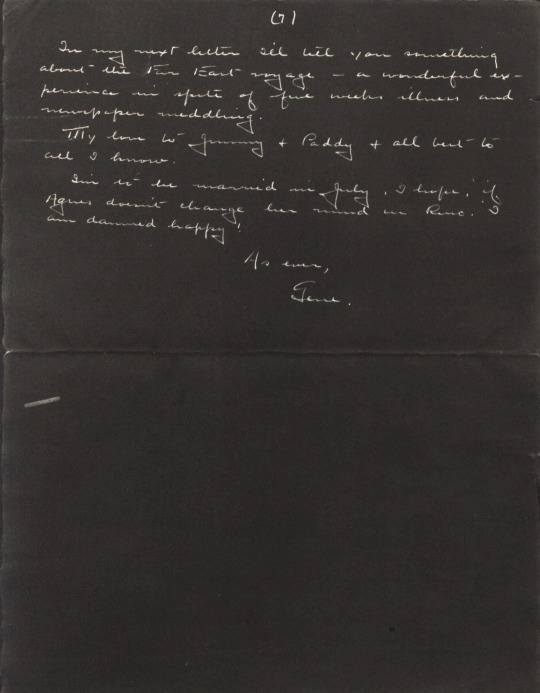


Happy National Handwriting Day!
This year, we bring you a selection of correspondence and other handwritten items from the M. Eleanor Fitzgerald Papers (UWM Mss 13). According to nationaldaycalendar.com, National Handwriting Day was established in 1977 by the Writing Instrument Manufacturers Association, “to promote the consumption of pens, pencils, and writing paper.” January 23rd is John Hancock’s birthday, the first signer of the Declaration of Independence, making it an understandable date for this holiday.
M. Eleanor Fitzgerald, known to friends as Fitzi, was born in 1877 in Deerfield, Wisconsin. In the early years of the twentieth century, she grew interested in the anarchist and labor movement, prompting her to begin working on the behalf of imprisoned labor leaders. She was close with anarchists Emma Goldman and Alexander Berkman even after their deportation from the US in 1918. During the 1920s she joined the Provincetown Players, bringing her in contact with many playwrights including Eugene O’Neill and E. E. Cummings. Her papers include correspondence with many of these individuals as well as others, leaving us with a wide array of different handwriting.
The first pair of photos above are the first and last page of a letter sent from Eugene O’Neill to Fitzgerald in 1929 (box 2, folder 24). Born in 1888, O’Neill is a notable American playwright and Nobel laureate. Many of his plays were put on by the Provincetown Players in the 1910s and 1920s. By the time of this letter, he had won three Pulitzer Prizes for his plays Beyond the Horizon (1920), Anna Christie (1922), and Strange Interlude (1928). He would go on to win one more Pulitzer for Long Day’s Journey into Night (posthumously in 1957) and the Nobel Prize in Literature in 1936. His letter checks in on mutual friends, discusses Strange Interlude’s success and his other productions, and mentions his upcoming wedding to Carlotta Monterey, provided that his current wife, Agnes Boulton, doesn’t change her mind about their pending divorce.
The second photo above comes from a letter sent in 1920 from Alexander Berkman to Fitzgerald (box 1, folder 11). Known as Sasha, Berkman was born in 1870 in present-day Lithuania, then part of the Russian Empire. He immigrated to the United States in 1888 where he became a part of the anarchist movement with friend and lover Emma Goldman. He was imprisoned for fourteen years in the 1890s for the attempted assassination of Henry Clay Frick and later another two years for his opposition to the draft in 1917. It was in the intervening years that he met Fitzgerald and they became close friends. He was deported to Russia under the 1918 Anarchist Exclusion Act. After growing disillusioned with the Bolshevik movement, both Berkman and Goldman left Russia in 1921, moving around Europe, often illegally, according to letters sent to Fitzgerald. The letter above is addressed to Fitzgerald asking about previous letters he had sent to her as he had not heard from her in a long time. He suggests different people to send letters through to ensure that they make it to him in Moscow. The rest of the letter, beginning at the end of this page, is rushed as Berkman needed to catch a train for Petrograd. Per other letters sent to Fitzgerald, he seemed to bounce between the two cities through much of 1920 before leaving Russia and ending up in Stockholm in 1922.
The final photo above comes from Russian lessons given to Fitzgerald by Berkman, labeled by Fitzi as “My Russian Lessons per Sasha” (box 1, folder 22). These undated notes show Berkman’s attempts to teach Fitzgerald Russian with a Latinized alphabet, explaining the different pronunciations of letters and letter combinations. Several letters from Berkman indicate a deep love and affection between the two, making phrases about love and kissing a logical introduction to the language.
More of Fitzgerald’s correspondence, both typed and handwritten, can be found in her papers at the UWM Archives. This National Handwriting Day, slow down and take a break from screens and try hand writing a note to friend or penning a journal entry.
-Samantha Dickson, Archives Graduate Intern
#uwm archives#m. eleanor fitzgerald#eugene o'neill#alexander berkman#provincetown players#national handwriting day#russian#language#letters#handwriting#correspondence#1920s#anarchism#emma goldman#anarchist#1900s
20 notes
·
View notes
Photo
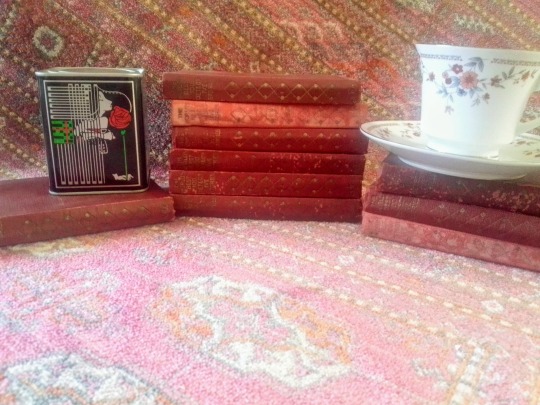



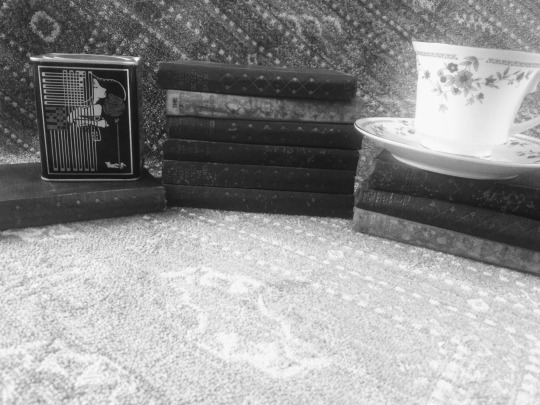
Some more vintage books from my collection. These are actually the first vintage books I bought as a teen: the 10-volume set of “The World’s Best 100 Detective Stories” (Funk & Wagnalls, 1929) for $50, quite the spendy purchase at the time! I was (am) a huge classic mystery fan &, in addition to the love of the look of these books (despite some damaged volumes), I loved the stories contained within & the pocket volume size made them easy to read in the car. Many happy hours were spent reading these books!
While the books contain stories by authors we know & love today, (such a Arthur Conan Doyle, Agatha Christie, G.K. Chesterton & R. Austin Freeman), the majority of the stories are by authors unfamiliar to many today. This is because these books predate the “Golden Age” of mystery that soon followed. These include writers such as Karl W. Detzer, Anna Katharine Green Rohlfs, George Barton, Thomas W. Hanshew, E.W. Hornung, Evelyn Johnson, and Gretta Palmer. Check them out if you can! Fun fact: E.W. Hornung was Arthur Conan Doyle’s brother-in-law & also an author. Inspired by (& perhaps slightly lampooning) Doyle’s Sherlock Holmes, he wrote his own series of crime stories--except his main character is a gentleman thief! These stories about “Raffles” are perhaps his most well-remembered tales today.
This photo op also showcases some of my tea collection; a teacup my grandmother gave me & some tea in this fabulous Art Deco tin from The Willow Tea Rooms in Glasgow, Scotland. Its original Art Deco architecture & furnishing remain today, so visit if you ever have the chance!
[Image Description: five photos showcasing ten small books, bound in red cloth with gold lettering. 1) the books arranged in three stacks, with a white teacup with a red floral design & a tea tin topping two of the stacks. The tea tin is square, black, with an art deco silhouette of a woman smelling a red rose. 2) all ten books in one stack 3) the stack of books topped by the teacup, a book open to the page showing the story titles, the first two by Arthur Conan Doyle. 4) a page open to the start of the story “Philomel Cottage” by Agatha Christie, then end of a G.K. Chesterton story on the opposite page. 5) the first photo but in black & white.]
#books#vintage#vintage books#red#colour#color#aestethic#tea#teacup#detective#mystery#art deco#arthur conan doyle#sherlock holmes#agatha christie#hercule poirot#g k chesterton#e w hornung
4 notes
·
View notes
Text
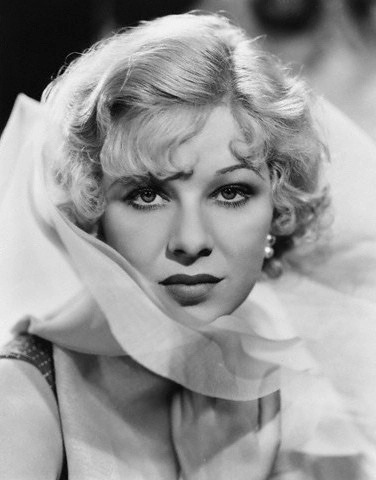
Glenda Farrell (June 30, 1904 – May 1, 1971) was an American actress. With a career spanning more than 50 years, Farrell appeared in over 100 films and television series, as well as numerous Broadway play. She won an Emmy Award in 1963 for Outstanding Supporting Actress for her performance as Martha Morrison in the medical drama television series Ben Casey.
Farrell began acting on stage as a child and continued with various theatre companies and on Broadway before signing with Warner Bros. Embodying the brassy blonde character of the early talkies. Farrell was a signature 1930s Warner Bros. star, starring in films such as Little Caesar (1931), I Am a Fugitive from a Chain Gang (1932), Mystery of the Wax Museum (1933) and Lady for a Day (1933). Starting with Smart Blonde (1937), Farrell played Torchy Blane, the hard-boiled, wisecracking reporter in a series of popular films; which later was credited by comic book writer Jerry Siegel as the inspiration for the DC Comics reporter, Lois Lane. After leaving Warner Bros. in 1939, Farrell remained active in film, television and theatre throughout rest of her career.
Farrell was born in Enid, Oklahoma, to Wilhelmina "Minnie" (nee Messer, 1879-1931) of German descent and Charles A. Farrell (1873-1937) of Irish and Cherokee descent. Farrell was the only daughter and had two younger brothers, Eugene and Richard. After her family moved to Wichita, Kansas, Farrell began acting on stage with a theatrical company at age seven, playing the role of Little Eva in the play Uncle Tom's Cabin. Farrell's mother had never achieved her desire of being an actress, encouraged and supported her daughter's acting interests. When her family moved to San Diego, California, a teenage Farrell joined the Virginia Brissac Stock Company. Farrell made the third honour roll in Motion Picture Magazine's "Fame and Fortune Contest". Her picture and biography were featured in the magazine's April 1919 issue, which also stated that Farrell had some experience in the chorus, vaudeville, and camp entertainments. Farrell received a formal education at the Mount Carmel Catholic Academy.
In 1928, Farrell was cast as the lead actress in the play The Spider and made her film debut in a minor role in Lucky Boy. Farrell moved to New York City in 1929, where she replaced Erin O'Brien-Moore as Marion Hardy in Aurania Rouverol's play Skidding. The play later served as the basis for the Andy Hardy film series. By April 1929, the Brooklyn Daily Eagle reported that she had played the role 355 times. Farrell appeared in a number of other plays, including Divided Honors, Recapture, and Love, Honor and Betray with George Brent, Alice Brady, and Clark Gable.
In 1930, she starred in the comedy short film The Lucky Break with Harry Fox, and in July 1930 Film Daily announced that Farrell had been cast in Mervyn LeRoy's film Little Caesar as the female lead, Olga Stassoff. Afterward, she returned to Broadway and starred in On the Spot at the Forrest Theater. At the time, Farrell conceded that motion pictures offered immense salaries, but felt the theater was the foundation of the actor's profession.[6] She appeared in several more plays.
In 1932, Farrell starred in the hit play Life Begins. Her performance caught the attention of Jack Warner, who signed her to a contract with the Warner Bros. film studio and cast her to recreate the role in Warner Bros.' film adaptation of Life Begins later that year. Farrell did not return to the stage until 1939.
In her first two years with Warner Bros., Farrell starred in 17 films, including Girl Missing (1933), Gambling Ship (1933), Man's Castle (1933) opposite Spencer Tracy, and Columbia Pictures' Lady for a Day (1933) by director Frank Capra. Farrell sometimes would work on three pictures that were shooting at the same time and managed to transition from one role to another effortlessly. She worked in over 20 movies between 1934 and 1936, starring in films such as Go into Your Dance (1935), Little Big Shot (1935) and High Tension (1936).
Farrell was close friends with fellow Warner Bros. actress Joan Blondell,[8] and throughout the early 1930s, they were paired as a comedy duo in a series of five Warner Bros. movies: Havana Widows (1933), Kansas City Princess (1934), Traveling Saleslady (1935), We're in the Money (1935) and Miss Pacific Fleet (1935). She also appeared with Blondell in the Academy Award-nominated Gold Diggers of 1935 and Gold Diggers of 1937 musical film series. Farrell and Blondell co-starred in a total of nine films. Together, they came to personify the smart and sassy, wisecracking dames of '30s and '40s film.
In 1937, Farrell began starring as Torchy Blane, the fast-talking wisecracking newspaper reporter.[9] Warner Bros. had started to develop a film adaptation of "MacBride and Kennedy" stories by detective novelist Frederick Nebel in 1936. For the film version, Kennedy is changed to a woman named Theresa "Torchy" Blane and is in love with MacBride's character. Director Frank MacDonald immediately knew whom he wanted for the role of Torchy Blane. Farrell had already proved that she could play hard-boiled reporters in Mystery of the Wax Museum (1933) and Hi, Nellie! (1934); and was quickly cast as Torchy with Barton MacLane playing detective Steve McBride in the first Torchy Blane film Smart Blonde (1937).
Smart Blonde was a surprise hit and became a popular second feature with moviegoers. Warner Bros. starred her in several more Torchy Blane movies opposite Barton MacLane. She portrayed Torchy in seven films from 1937 to 1939. The films took Farrell's popularity to a new level. She was beloved by the moviegoing public and received a huge amount of fan mail for the films. On her portrayal of the Torchy Blane character, Farrell said in her 1969 Time interview: "So before I undertook to do the first Torchy, I determined to create a real human being—and not an exaggerated comedy type. I met those [news-women] who visited Hollywood and watched them work on visits to New York City. They were generally young, intelligent, refined, and attractive. By making Torchy true to life, I tried to create a character practically unique in movies."
Along with starring in the Torchy Blane series, Farrell appeared in a number of other films, including Breakfast for Two (1937), Hollywood Hotel (1937), and Prison Break (1938). Additionally, she performed in several radio series, including Vanity and Playhouse in 1937, and Manhattan Latin with Humphrey Bogart in 1938.
Farrell was elected to a one-year term as the honorary mayor of North Hollywood in 1937, beating her competition Bing Crosby and Lewis Stone by a three-to-one margin. Even though it began as a Warner Bros. publicity stunt, Farrell took the job seriously, attending functions, presentations, and ceremonies. She was also put in charge when the North Hollywood Chamber of Commerce announced that it wanted to put sewers along Ventura Highway and started the groundwork for that project.
In 1939, Farrell left Warner Bros. when her contract expired. Several factors resulted in her decision including, feeling Warner Bros. was typecasting her as a newspaper reporter, a disagreement by Jack Warner for a pay rise, and wanting to return to the theatre. Farrell later told syndicated columnist Bob Thomas in 1952: "There's something more satisfying about working in a play. You get that immediate response from the audience, and you feel that your performance is your own. In pictures, you get frustrated because you feel you have no power over what you're doing".
In July 1939, Farrell starred in the lead role in the play Anna Christie at the Westport Country Playhouse, then followed that with a summer stock production of S. N. Behrman's play Brief Moment. She co-starred with Lyle Talbot and Alan Dinehart in the long-running play Separate Rooms at Broadway's Plymouth Theater for a successful 613-performance run throughout 1940 and 1941. In April 1942, she starred in the Broadway play, The Life of Reilly.
Farrell returned to motion pictures in 1941, starring in director Mervyn LeRoy's film noir, Johnny Eager. Throughout the '40s, '50s, and '60s, Farrell continued to appear in numerous films, including the Academy Award-nominated The Talk of the Town (1942), Heading for Heaven (1947) and the 1954 Charlton Heston adventure epic Secret of the Incas.
Farrell made her television debut in 1949 in the anthology series The Chevrolet Tele-Theatre. She appeared in over 40 television series between 1950 and 1969, including Kraft Theatre, Studio One in Hollywood, The United States Steel Hour, Bonanza, and Bewitched.
In 1963, she guest-starred in the ABC medical drama series Ben Casey as Martha Morrison in the two-part episode "A Cardinal Act of Mercy". She won the Primetime Emmy Award for outstanding performance in a supporting role by an actress. Farrell co-starred with her son Tommy Farrell in two comedy films in 1964: Kissin' Cousins with Elvis Presley and Jerry Lewis in The Disorderly Orderly.
Farrell briefly retired in 1968, but soon decided to return to acting. Farrell's final work in her long career was the Broadway play Forty Carats. She was appearing in Forty Carats at the Morosco Theatre until ill health forced her to leave the play a few months later. Farrell was eventually diagnosed with lung cancer.
In 1920, Farrell was hired to do a dance routine at a Navy benefit ball in San Diego. There she met her first husband, Thomas Richards. They were married from 1921 to 1929. Their son, actor Tommy Farrell, was born in 1921. In 1931, she was engaged to Jack Durant of the comedy duo "Mitchell and Durant" but never married him. She dated screenwriter Robert Riskin a few years later.
In 1941, Farrell married Dr. Henry Ross. The couple met when Farrell sprained her ankle during a performance of the play Separate Rooms and was treated backstage by Ross, who had been called forth from the audience. Ross was a staff surgeon at New York's Polyclinic Hospital and West Point graduate, who later served as chief of the public health section on General Eisenhower's staff. Farrell and Ross remained married until her death 30 years later. Farrell was a devout Catholic.
In 1971, Farrell died from lung cancer, aged 66, at her home in New York City and was interred in the West Point Cemetery in West Point, New York. When Ross, who did not remarry, died in 1991, he was buried with her.
Comic book writer Jerry Siegel credits Farrell's portrayal of Torchy Blane as the inspiration for the fictional Daily Planet reporter and Superman's love interest, Lois Lane. Siegel also named June Farrell, one of the characters in his Funnyman comic book series, after Farrell.
On February 8, 1960, Farrell received a star on the Hollywood Walk of Fame for her contribution to motion pictures, at 6524 Hollywood Boulevard.
In 1977, Farrell's husband Dr. Henry Ross donated 38 acres of land to the Putnam County Land Trust, establishing the Glenda Farrell–Henry Ross Preserve.
#glenda farrell#classic hollywood#classic movie stars#golden age of hollywood#old hollywood#1920s hollywood#1930s hollywood#1940s hollywood#1950s hollywood#1960s hollywood#1970s hollywood#hollywood legend
18 notes
·
View notes
Text
2020 Year End Compilation
CLASSIC FILM REVIEWS (IN ALPHABETIC ORDER OF RATING)
Columbus [2017] ★★★★★
Tokyo Olympiad [1965] ★★★★★
War and Peace [1966-67] ★★★★★
Castle of Sand [1974] ★★★★½
The Champ [1931] ★★★★½
The Circus [1928] ★★★★½
The Fabulous Baron Munchausen [1962] ★★★★½
A Face in the Crowd [1957] ★★★★½
The Fearless Hyena [1979] ★★★★½
A Ghost Story [2017] ★★★★½
Gloria [1980] ★★★★½
Grand Prix [1966] ★★★★½
The Hellbenders [1967] ★★★★½
In the Family [2011] ★★★★½
Jason and the Argonauts [1963] ★★★★½
Mikey and Nicky [1976] ★★★★½
Now, Voyager [1942] ★★★★½
Paper Moon [1973] ★★★★½
The Pawnbroker [1964] ★★★★½
The Return [2003] ★★★★½
Salesman [1969] ★★★★½
Statues Also Die [1953] ★★★★½
The World [2004] ★★★★½
Blackmail [1929] ★★★★
The Covered Wagon [1923] ★★★★
The Dark Past [1948] ★★★★
Dry Wood [1973] ★★★★
Fall Guy [1982] ★★★★
The Front Page [1931] ★★★★
The Hanging Tree [1959] ★★★★
Hope and Glory [1987] ★★★★
Invention for Destruction [1958] ★★★★
A Japanese Tragedy [1953] ★★★★
Journey to the Beginning of Time [1955] ★★★★
My Brother's Wedding [1983] ★★★★
Never Let Me Go [2010] ★★★★
The Passenger [1975] ★★★★
The Sniper [1952] ★★★★
Songs My Brothers Taught Me [2015] ★★★★
Tight Spot [1955] ★★★★
The Wind [1928] ★★★★
Xiao Wu [1997] ★★★★
Angels Over Broadway [1940] ★★★½
Antonio Gaudí [1984] ★★★½
The Baker’s Wife [1938] ★★★½
The Blood of Jesus [1941] ★★★½
The Brothers Rico [1957] ★★★½
Capricious Summer [1968] ★★★½
Cluny Brown [1946] ★★★½
Cowboy [1958] ★★★½
Daddy Longlegs [2009] ★★★½
Death in the Garden [1956] ★★★½
Excalibur [1981] ★★★½
Eyes of Laura Mars [1978] ★★★½
The Flying Ace [1926] ★★★½
The Funeral [1984] ★★★½
Hedwig and the Angry Inch [2001] ★★★½
High Hopes [1988] ★★★½
Holiday [1938] ★★★½
Housekeeping [1987] ★★★½
Klute [1971] ★★★½
The Lineup [1958] ★★★½
Medium Cool [1969] ★★★½
Parade [1974] ★★★½
The Pearls of the Crown [1937] ★★★½
Peppermint Frappé [1967] ★★★½
The President’s Barber [2004] ★★★½
Rebels of the Neon God [1992] ★★★½
A Report on the Party and the Guests [1966] ★★★½
The Sheltering Sky [1990] ★★★½
The Shooting [1966] ★★★½
Slightly French [1949] ★★★½
The Song of Songs [1933] ★★★½
The Story of Temple Drake [1933] ★★★½
Story of Women [1988] ★★★½
Teorema [1968] ★★★½
Trigger, Jr. [1950] ★★★½
Tunes of Glory [1960] ★★★½
Unknown Pleasures [2002] ★★★½
The Watermelon Woman [1996] ★★★½
The Whole Town's Talking [1935] ★★★½
Wishmaster [1997] ★★★½
Captain from Castile [1947] ★★★
Death in Venice [1971] ★★★
DeN [2001] ★★★
Fairytale [2017] ★★★
A Fistful of Dollars [1964] ★★★
The Flavor of Green Tea Over Rice [1952] ★★★
The Great Northfield Minnesota Raid [1972] ★★★
Monstrum [2018] ★★★
Olivia [1951] ★★★
Party Wire [1935] ★★★
Repast [1951] ★★★
Sugar Hill [1974] ★★★
A Taxing Woman [1987] ★★★
Anna Christie [1930] ★★½
Black Peter [1964] ★★½
Johnny O’Clock [1947] ★★½
A Man Called Peter [1955] ★★½
Meatballs [1979] ★★½
Min and Bill [1930] ★★½
Ocean's Eleven [1960] ★★½
Spiritual Kung Fu [1978] ★★½
The Wilby Conspiracy [1975] ★★½
Affair in Trinidad [1952] ★★
Cat Ballou [1965] ★★
If You Could Only Cook [1935] ★★
Little Old New York [1923] ★★
The Magus [1968] ★★
My Lucky Stars [1985] ★★
Phase IV [1974] ★★
Under the Sun of Satan [1987] ★★
Absurd [1981] ★½
Doctor Dolittle [1967] ★½
Evel Knievel [1971] ★½
The Grief of Others [2015] ★½
Half a Loaf of Kung Fu [1978] ★½
Husbands [1970] ★½
Joan of Arc [1948] ★½
Supernatural [1933] ★½
Connecting Rooms [1970] ★
Fearless Hyena Part II [1983] ★
Stray Dogs [2013] ★
2 notes
·
View notes
Photo
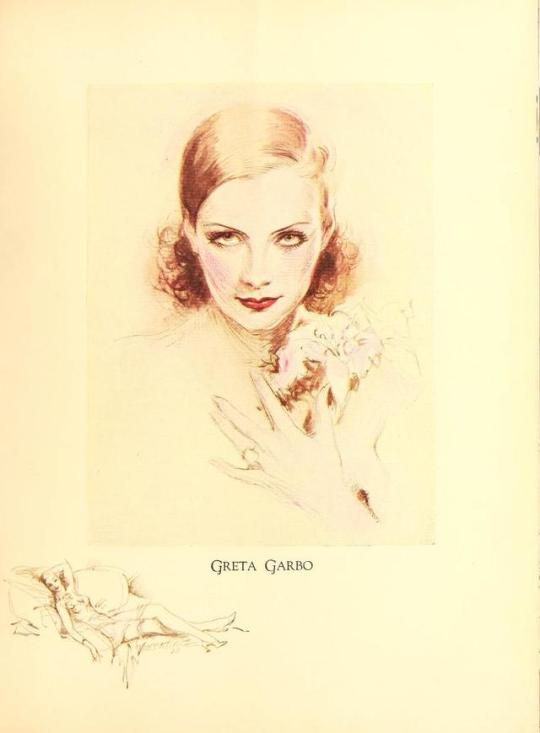
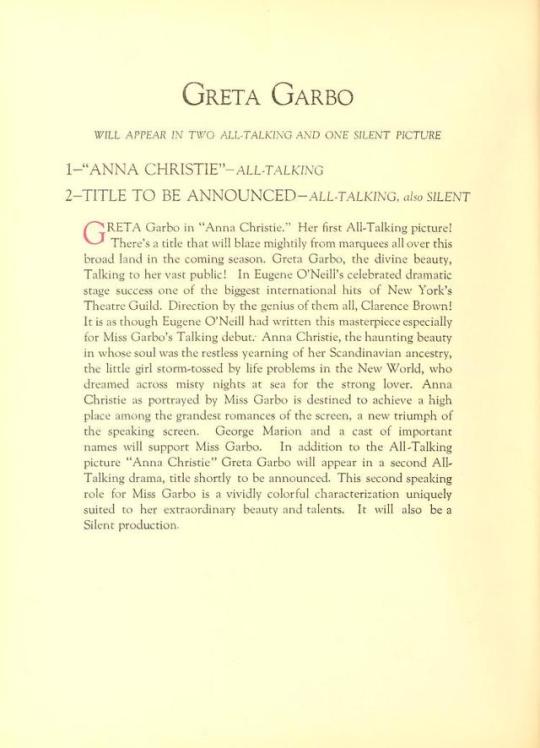
Greta Garbo, in Exhibitors Herald World, 29 June 1929.
Quick note: During the transition to sound cinema in the United States, it was common for films to be produced in both silent and sound versions, since the exhibition sector of the industry took some time to convert its theaters. While Anna Christie would only appear in sound-equipped houses, the as-yet-unnamed film could presumably go out to all markets.
#exhibitors herald world#trade press#1929#1930#metro-goldwyn-mayer#MGM#star system#greta garbo#anna christie#sound cinema#talkies#talking pictures#silent cinema#silent film#film history#classical hollywood cinema#classical hollywood#hollywood#film#cinema#movies#media history digital library#mhdl
5 notes
·
View notes
Video
<strong>Greta Garbo 1905 - 1990 <a href="https://www.flickr.com/photos/colorizedimages/">by oneredsf1</a></strong>
"Greta Garbo "Anna Christie" by Clarence Sinclair Bull, 1929 Thanks to greta_g for the image."
11 notes
·
View notes
Text
OSCARS
Legenda:
Legenda - Winners I have watched
Legenda - Winners I don’t know of
Legenda - Winners I know of
Legenda - Nominees I have watched
Legenda - Nominees I don’t know of
Legenda - Nominees I know of
1927/28
BEST MOVIE
Wings
The Racket
7th Heaven
= 0
BEST ACTRESS
Janet Gaynor:
for her role as Diane Angela, The Wife in 7th Heaven and Street Angel Sunrise: A Song of Two Humans
Louise Dresser:
for her role as Mrs. Pleznik in A Ship Comes In
Gloria Swanson:
for her role as Sadie Thompson in Sadie Thompson
1928/29
BEST MOVIE
The Broadway Melody
Alibi
Hollywood Revue
In Old Arizona
The Patriot
= 0
Mary Pickford:
for her role as Norma Besant in Coquette
Ruth Chatterton:
for her role as Jacqueline Floriot in Madame X
Betty Compson:
for her role as Carrie in The Barker
Jeanne Eagels:
for her role as Leslie Crosbie in The Letter
Corinne Griffith:
for her role as Emma Hamilton in The Divine Lady
Bessie Love:
for her role as Hank Mahoney in The Broadway Melody
1929/30
BEST MOVIE
All Quiet on the Western Front
The Big House
Disraeli
The Divorcee
The Love Parade
= 0
Norma Shearer:
for her role as Jerry Bernard Martin in The Divorcee
Nancy Carroll:
for her role as Hallie Hobart in The Devil’s Holiday
Ruth Chatterton:
for her role as Sarah Storm in Sarah and Son
Greta Garbo:
for her role as Anna Christie/Madame Rita Cavallini in Anna Christie Romance
Norma Shearer:
for her role as Lucia Marlett in Their Own Desire
Gloria Swanson:
for her role as Marion Donnell in The Trespasser
1930/31
BEST MOVIE
Cimarron
East Lynne
The Front Page
Skippy
Trader Horn
= 0
Marie Dressler:
for her role as Min Divot in Min and Bill
Marlene Dietrich:
for her role as Mademoiselle Amy Jolly in Morocco
Irene Dunne:
for her role as Sabra Cravat in Cimarron
Ann Harding:
for her role as Linda Seton in Holiday
Norma Shearer:
for her role as Jan Ashe in A Free Soul
1931/32
BEST MOVIE
Grand Hotel
Arrowsmith
Bad Girl
The Champ
Five Star Final
One Hour with You
Shanghai Express
The Smiling Lieutenant
= 0
Helen Hayes:
for her role as Madelon Claudet in The Sin of Madelon Claudet
Marie Dressler:
for her role as Emma Thatcher Smith in Emma
Lynn Fontanne:
for her role as The Actress in The Guardsman
1932/33
BEST MOVIE
Cavalcade
42nd Street
A Farewell to Arms
I Am a Fugitive from a Chain Gang
Lady for a Day
Little Women
The Private Life of Henry VIII
She Done Him Wrong
Smilin’ Through
State Fair
= 0
BEST ACTRESS
Katharine Hepburn:
for her role as Eva Lovelace in Morning Glory
May Robson:
for her role as Apple Annie in Lady for a Day
Diana Wynyard:
for her role as Jane Marryot in Cavalcade
1934
BEST MOVIE
It Happened One Night
The Barretts of Wimpole Street
Cleopatra
Flirtation Walk
The Gay Divorcee
Here Comes the Navy
The House of Rothschild
Imitation of Life
One Night of Life
The Thin Man
Viva Villa!
The White Parade
= 0
BEST ACTRESS
Claudette Colbert:
for her role as Ellie Andrews in It Happened One Night
Grace Moore:
for her role as Mary Barrett in One Night of Love
Norma Shearer:
for her role as Elizabeth Barrett in The Barrett of Wimpole Street
Bette Davis:
for her role as Mildred Rogers in Of Human Bondage
1935
BEST MOVIE
Munity on the Bounty
Alice Adams
Broadway Melody of 1936
Captain Blood
David Copperfield
The Informer
The Lives of a Bengal Lancer
A Midsummer Night’s Dream
Les Misérables
Naughty Marietta
Rugs of Red Gap
Top Hat
= 0
BEST ACTRESS
Bette Davis:
for her role as Joyce Heath in Dangerous
Elisabeth Bergner:
for her role as Gemma Jones in Escape Me Never
Claudette Colbert:
for her role as Jane Everest in Private Words
Katharine Hepburn:
for her role as Alice Adams in Alice Adams
Miriam Hopkins:
for her role as Becky Sharp in Becky Sharp
Merle Oberon:
for her role as Kitty Vane in The Dark Angel
1936
BEST MOVIE
The Great Ziegfeld
Anthony Adverse
Dodsworth
Libeled Lady
Mr. Deeds Goes to Town
Romeo and Juliet
San Francisco
The Story of Louis Pasteur
A Tale of Two Cities
Three Smart Girls
= 0
BEST ACTRESS
Luise Rainer:
for her role as Anna Held in The Great Ziegfeld
Irene Dunne:
for her role as Theodora Lynn in Theodora Goes Wild
Gladys George:
for her role as Carrie Snyder in Valiant is the Word for Carrie
Carole Lombard:
for her role as Irene Bullock in My Man Godfey
Norma Shearer:
for her role as Juliet Capulet in Romeo and Juliet
1937
BEST MOVIE
The Life of Emile Zola
The Awful Truth
Captain Courageous
Dead End
The Good Earth
In Old Chicago
Lost Horizon
One Hundred Men and a Girl
Stage Door
= 0
BEST ACTRESS
Luise Rainer:
for her role as O-Lan in The Good Earth
Irene Dunne:
for her role as Lucy Warriner in The Awful Truth
Greta Garbo:
for her role as Marguerite Gautier in Camille
Janet Gaynor:
for her role as Esther Victoria Blodgett/Vicki Lester in A Star is Born
Barbara Stanwyck:
for her role as Stella Martin Dallas in Stella Dallas
1938
BEST MOVIE
You Can’t Take It With You
The Adventures of Robin Hood
Alexander’s Ragtime Band
Boys Town
The Citadel
Four Daughters
Grand Illusion
Jezebel
Pygmalion
Test Pilot
= 0
BEST ACTRESS
Bette Davis:
for her role as Julie Marsden in Jezebel
Fay Bainter:
for her role as Hannah Parmalee in White Banners
Wendy Hiller:
for her role as Eliza Doolittle in Pygmalion
Norma Shearer:
for her role as Marie Antoinette in Marie Antoinette
Margaret Sullavan:
for her role as Patricia “Pat” Hollmann in Three Comrades
1939
BEST MOVIE
Gone With The Wind
Dark Victory
Goodbye, Mr. Chips
Love Affair
Mr. Smith Goes to Washington
Ninotchka
Of Mice and Men
Stagecoach
The Wizard of Oz
Wuthering Heights
= 0
BEST ACTRESS
Vivien Leigh:
for her role as Scarlett O’Hara in Gone with the Wind
Bette Davis:
for her role as Judith Traherne in Dark Victory
Irene Dunne:
for her role as Terry McKay in Love Affair
Greta Garbo:
for her role as Nina Yakushnova “Ninotchka” Ivanoff” in Ninotchka
Greer Garson:
for her role as Katherine Bridges in Goodbye, Mr. Chips
1940
BEST MOVIE
Rebecca
All This, and Heaven Too
Foreign Correspondent
The Grapes of Wrath
The Great Dictator
Kitty Foyle
The Letter
The Long Voyage Home
Our Town
The Philadelphia Story
= 0
BEST ACTRESS:
Ginger Rogers:
for her role as Kitty Foyle in Kitty Foyle
Bette Davis:
for her role as Leslie Crosbie in The Letter
Joan Fontaine:
for her role as The Second Mrs. de Winter in Rebecca
Katharine Hepburn:
for her role as Tracy Lord in The Philadelphia Story
Martha Scott:
for her role as Emily Webb in Our Town
1941
BEST MOVIE
How Green Was My Valley
Blossoms in the Dust
Citizen Kane
Here Comes Mr. Jordan
Hold Back the Dawn
The Little Foxes
The Maltese Falcon
One Foot in Heaven
Sargeant York
Suspicion
= 0
BEST ACTRESS:
Joan Fontaine:
for her role as Lina McLaidlaw Aysgarth in Suspicion
Bette Davis:
for her role as Regina Giddens, The Little Foxes
Olivia de Havilland:
Emmy Brown, Hold Back the Dawn
Greer Garson, Blossoms in the Dust
Barbara Stanwyck, Ball of Fire
1942
BEST MOVIE
Mrs. Miniver
The Invaders
Kings Row
The Magnificent Ambersons
The Pied Piper
The Pride of the Yankees
Random Harvest
The Talk of the Town
Wake Island
Yankee Doodle Dandy
= 0
BEST ACTRESS:
Greer Garson, Mrs. Miniver
Bette Davis, Now, Voyager
Katharine Hepburn, Woman of the Year
Rosalind Russel, My Sister Eileen
Teresa Wright, The Pride of the Yankees
1943
BEST MOVIE
Casablanca
For Whom the Bell Tolls
Heaven Can Wait
The Human Comedy
In Which We Serve
Madame Curie
The More the Merrier
The Ox-Bow Incident
The Song of Bernadette
Watch on the Rhine
= 0
BEST ACTRESS:
Jennifer Jones, The Song of Bernadette
Jean Arthur, The More the Merrier
Ingrid Bergman, For Whom the Bell Tolls
Joan Fontaine, The Constant Nymph
Greer Garson, Madame Curie
1944
BEST MOVIE
Going My Way
Double Indemnity
Gaslight
Since You Went Away
Wilson
= 0
BEST ACTRESS:
Ingrid Bergman, Gaslight
Claudette Colbert, Since You Went Away
1945
BEST MOVIE
The Lost Weekend
Anchors Aweigh
The Bells of St. Mary’s
Mildred Pierce
Spellbound
= 0
1946
BEST MOVIE
The Best Years of Our Lives
Henry V
= 0
1947
BEST MOVIE
Gentleman’s Agreement
The Bishop’s Wife
Crossfire
Great Expectations
Miracle on 34th Street
= 0
1948
BEST MOVIE
Hamlet
Johnny Belinda
The Red Shoes
The Snake Pit
The Treasure of the Sierra Madre
= 0
1949
BEST MOVIE
All the King’s Men
Battleground
The Heiress
A Letter to Three Wives
Twelve O’Clock High
= 0
1950
BEST MOVIE
All About Eve
Born Yesterday
Father of the Bride
King Solomon’s Mines
Sunset Boulevard
= 0
1951
BEST MOVIE
An American In Paris
Decision Before Dawn
A Place in the Sun
Quo Vadis
A Streetcar Named Desire
= 0
1952
BEST MOVIE
The Greatest Show on Earth
High Noon
Ivanhoe
Moulin Rouge
The Quiet Man
= 0
1953
BEST MOVIE
From Here to Eternity
Julius Caesar
The Robe
Roman Holiday
Shane
= 1
1954
BEST MOVIE
On The Waterfront
The Caine Mutiny
The Country Girl
Seven Brides for Seven Brothers
Three Coins in the Fountain
= 0
1955
BEST MOVIE
Marty
Love is a Many-Splendored Thing
Mister Roberts
Picnic
The Rose Tattoo
= 0
1956
BEST MOVIE
Around the World in 80 Days
Friendly Persuasion
Giant
The King and I
The Ten Commandments
= 0
1957
BEST MOVIE
The Bridge On The River Kwai
12 Angry Men
Peyton Place
Sayonara
Witness for the Prosecution
= 0
1958
BEST MOVIE
Gigi
Auntie Mame
Cat on a Hot Tin Roof
The Defiant Ones
Separate Tables
= 0
1959
BEST MOVIE
Ben-Hur
Anatomy of a Murder
The Diary of Anne Frank
The Nun’s Story
Room at the Top
= 0
1960
BEST MOVIE
The Apartment
The Alamo
Elmer Gantry
Sons and Lovers
The Sundowners
= 0
1961
BEST MOVIE
West Side Story
Fanny
The Guns of Navarone
The Hustler
Judgment at Nuremberg
= 1
1962
BEST MOVIE
Lawrence of Arabia
The Longest Day
The Music Man
Mutiny on the Bounty
To Kill a Mockingbird
= 0
1963
BEST MOVIE
Tom Jones
America America
Cleopatra
How the West Was Won
Lilies of the Field
= 0
1964
BEST MOVIE
My Fair Lady
Becket
Dr. Strangelove or: How I Learned to Stop Worrying and Love the Bomb
Mary Poppins
Zorba the Greek
= 1
1965
BEST MOVIE
The Sound of Music
Darling
Doctor Zhivago
Ship of Fools
A Thousand Clowns
= 1
1966
BEST MOVIE
A Man for All Seasons
Alfie
The Russians Are Coming, the Russians Are Coming
The Sand Pebbles
Who’s Afraid of Virginia Wolf
= 0
1967
BEST MOVIE
In the Heat of the Night
Bonnie and Clyde
Doctor Dolittle
The Graduate
Guess Who’s Coming to Dinner
= 0
1968
Oliver!
Funny Girl
The Lion in Winter
Rachel, Rachel
Romeo and Juliet
= 1
1969
BEST MOVIE
Midnight Cowboy
Anne of the Thousand Days
Butch Cassidy and the Sundance Kid
Hello, Dolly!
Z
= 0
1970
BEST MOVIE
Patton
Airport
Five Easy Pieces
Love Story
M*A*S*H
= 0
1971
BEST MOVIE
The French Connection
A Clockwork Orange
Fiddler on the Roof
The Last Picture
Nicholas and Alexandra
= 0
1972
BEST MOVIE
The Godfather
Cabaret
Deliverance
The Emigrants
Sounder
= 0
1973
BEST MOVIE
The Sting
American Graffitti
Cries and Whispers
The Exorcist
A Touch of Class
= 0
1974
BEST MOVIE
The Godfather Part II
Chinatown
The Conversation
Lenny
The Towering Inferno
= 0
1975
BEST MOVIE
One Flew Over The Cuckoo’s Nest
Barry Lyndon
Dog Day Afternoon
Jaws
Nashville
= 0
1976
BEST MOVIE
Rocky
All the President’s Men
Bound for Glory
Network
Taxi Driver
= 0
1977
BEST MOVIE
Annie Hall
The Goodbye Girl
Julia
Star Wars
The Turning Point
= 0
1978
BEST MOVIE
The Deer Hunter
Coming Home
Heaven Can Wait
Midnight Express
An Unmarried Woman
= 0
1979
BEST MOVIE
Kraver vs. Kramer
All That Jazz
Apocalypse Now
Breaking Away
Norma Rae
= 1
1980
BEST MOVIE
Ordinary People
Coal Miner’s Daughter
The Elephant Man
Raging Bull
Tess
= 0
1981
BEST MOVIE
Chariots of Fire
Atlantic City
On Golden Pond
Raiders of the Lost Ark
Reds
= 0
1982
BEST MOVIE
Ghandi
E.T. the Extra-Terrestrial
Missing
Tootsie
The Verdict
= 1
1983
BEST MOVIE
Terms of Endearment
The Big Chill
The Dresser
The Right Stuff
Tender Mercies
= 0
1984
BEST MOVIE
Amadeus
The Killing Fields
A Passage to India
Places in the Heart
A Soldier’s Story
= 0
1985
BEST MOVIE
Out of Africa
The Color Purple
Kiss of the Spider Woman
Prizzi’s Honor
Witness
= 0
1986
BEST MOVIE
Platoon
Children of a Lesser God
Hannah and Her Sisters
The Mission
A Room with a View
= 0
1987
BEST MOVIE
The Last Emperor
Broadcast News
Fatal Attraction
Hope and Glory
Moonstruck
= 2
1988
BEST MOVIE
Rain Man
The Accidental Tourist
Dangerous Liaisons
Mississipi Burning
Working Girl
= 0
1989
BEST MOVIE
Driving Miss Daisy
Born on the Fourth of July
Dead Poets Society
Field of Dreams
My Left Foot
= 1
1990
BEST MOVIE
Dances with Wolves
Awakenings
Ghost
The Godfather III
Goodfellas
= 1
1991
BEST MOVIE
The Silence of the Lambs
Beauty and the Beast
Bugsy
JFK
The Prince of Tides
= 1
1992
BEST MOVIE
Unforgiven
The Crying Game
A Few Good Men
Howards End
Scent of a Woman
= 0
1993
BEST MOVIE
Schindler’s List
The Fugitive
In the Name of the Father
The Piano
The Remains of the Day
= 1
1994
BEST MOVIE
Forrest Gump
Four Weddings and a Funeral
Pulp Fiction
Quiz Show
The Shawshank Redemption
= 3
1995
BEST MOVIE
Braveheart
Apollo 13
Babe
The Postman (Il Postino)
Sense and Sensibility
= 4
1996
BEST MOVIE
The English Patient
Fargo
Jerry McGuire
Secrets & Lies
Shine
= 0
1997
BEST MOVIE
Titanic
As Good as it Gets
The Full Monty
Good Will Hunting
L.A. Confidential
= 3
1998
BEST MOVIE
Shakespeare in Love
Elizabeth
Life is Beautiful
Saving Private Ryan
The Thin Red Line
= 3
1999
BEST MOVIE
American Beauty
The Cider House Rules
The Green Mile
The Insider
The Sixth Sense
= 1
2000
BEST MOVIE
Gladiator
Chocolat
Crouching Tiger, Hidden Dragon
Erin Brokovich
Traffic
= 3
2001
BEST MOVIE
A Beautiful Mind
Gosfrod Park
In the Bedroom
The Lord of the Rings: The Fellowship of the Ring
Moulin Rouge!
= 1
2002
BEST MOVIE
Chicago
Gangs of New York
The Hours
The Lord of the Rings: The Two Towers
The Pianist
= 1
2003
BEST MOVIE
The Lord of the Rings: The Return of the King
Lost in Translation
Master and Commander: The Far Side of the World
Mystic River
Seabiscuit
= 0
2004
BEST MOVIE
Million Dollar Baby
The Aviator
Finding Neverland
Ray
Sideways
= 1
2005
BEST MOVIE
Crash
Brokeback Mountain
Capote
Good Night, and Good Luck
Munich
= 0
2006
BEST MOVIE
The Departed
Babel
Letters from Iwo Jima
Little Miss Sunshine
The Queen
= 2
2007
BEST MOVIE
No Country for Old Men
Atonement
Juno
Michael Clayton
There Will Be Blood
= 1
2008
BEST MOVIE
Slumdog Millionaire
The Curious Case of Benjamin Button
Frost/Nixon
Milk
The Reader
= 1
2009
BEST MOVIE
The Hurt Locker
Avatar
The Blind Side
District 9
An Education
Inglorious Basterds
Precious: Based on the Novel “Push” by Saphire
A Serious Man
Up
Up in the Air
= 4
2010
BEST MOVIE
The King’s Speech
127 Hours
Black Swan
The Fighter
Inception
The Kids Are All Right
The Social Network
Toy Story 3
True Grit
Winter’s Bone
= 5
2011
BEST MOVIE
The Artist
The Descendants
Extremely Loud & Incredibly Close
The Help
Hugo
Midnight in Paris
Moneyball
The Tree of Life
War Horse
= 3
2012
BEST MOVIE
Argo
Amour
Beasts of the Southern Wild
Django Unchained
Les Miserábles
Life of Pi
Lincoln
Silver Linings Playbook
Zero Dark Thirty
= 4
2013
BEST MOVIE
12 Years a Slave
American Hustle
Captain Philips
Dallas Buyers Club
Gravity
Her
Nebraska
Philomena
The Wolf of Wall Street
= 4
2014
BEST MOVIE
Birdman
American Sniper
Boyhood
The Grand Budapest Hotel
The Imitation Game
Selma
The Theory of Everything
Whiplash
= 2
2015
BEST MOVIE
Spotlight
The Big Short
Bridge of Spies
Brooklyn
Mad Max: Fury Road
The Martian
The Revenant
Room
= 3
BEST ACTRESS:
Brie Larson, Room
Cate Blanchett, Carol
Jennifer Lawrence, Joy
Charlotte Rampling, 45 Years
Saoirse, Brooklyn
2016
BEST MOIVE
Moonlight
La La Land
Arrival
Fences
Hacksaw Ridge
Hell or High Water
Hidden Figures
Lion
Manchester by the Sea
= 5
BEST ACTRESS:
Emma Stone, La La Land
Isabelle Huppert, Elle
Ruth Negga, Loving
Natalie Portman, Jackie
Meryl Streep, Florence Foster Jenkins
2017
BEST MOVIE
The Shape of Water
Lady Bird
Call Me by Your Name
Get Out
Darkest Hour
Dunkirk
Phantom Thread
The Post
Three Billboards Outside Ebbig, Missouri
= 4
BEST ACTRESS:
Frances McDormand, Three Billboards Outside Ebbing, Missouri
Sally Hawkins, The Shape of Water
Margot Robbie, I, Tonya
Saoirse Ronan, Lady Bird
Meryl Streep, The Post
TOTAL = 71/
6 notes
·
View notes
Text
Cosplay the Classics: Greta Garbo
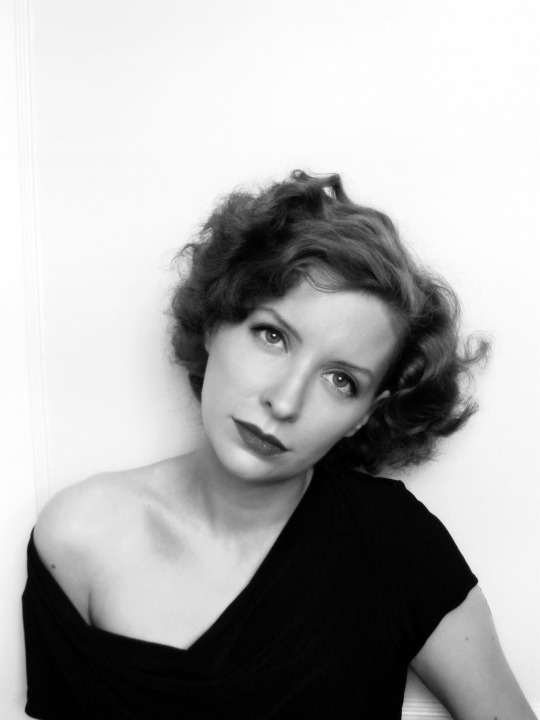
Greta Garbo was one of my very first favorite actresses. That perfectly magnetic face was a force even on a television screen. I set my VCR to tape every movie she was in as they appeared on TCM, then bought them all on DVD as they were released. In high school, a few of my friends even crafted Garbo-themed doodads for me because she wasn’t plastered on all manner of goods like Audrey Hepburn, James Dean or Marilyn Monroe were in the early 2000s. Though I didn’t put voice to it at the time, seeing a woman whose romance so clearly knew no gender was formative for me.
Garbo is by no means obscure, but even more people need to be watching her films. Don’t fret! Filmstruck to the rescue: Greta Garbo is their star of the week!
No time like the present to try my hand at a wearable Swedish Sphinx look. I aimed for late-silent Garbo, a la The Kiss (1929) and The Mysterious Lady (1928).

Taken and collaged by photographer Clarence Sinclair Bull in 1931, this photo spurred on the sticky nickname.
The Face of Garbo
The face of Garbo has inspired odes in spiritual, philosophical, and psychoanalytical terms over the past century and, yeah, it would be way above my pay grade to contribute to that canon. In lieu of that, let’s learn a little bit about how Garbo’s image was constructed.
When Greta Garbo made the trek from Sweden to Hollywood in 1925, she had all the raw ingredients to be a screen star. A face with no bad angles that still and film cameras can love alike is rare. All Garbo needed was a bit of polish to marry her outward appearance to the languid grace of her performance style.
Off screen, Garbo was often reported as wearing unassuming baggy trousers, loafers, and oversized sweaters. A thoroughly uncomplicated person. On screen, Adrian collaborated closely with her to style and design fashions that would follow her every move in seventeen of her feature films.
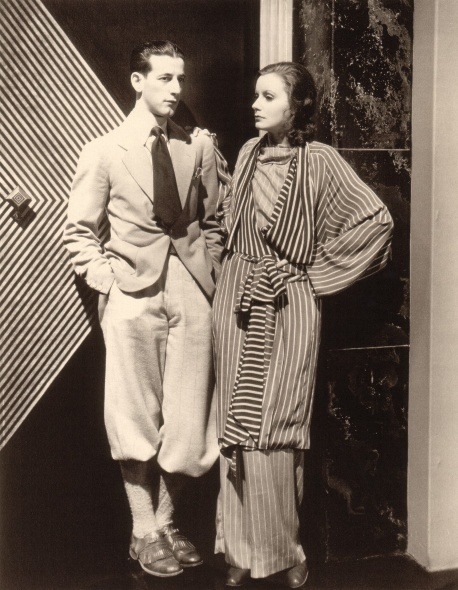
While I didn’t do a full-body look this time around, I tried to choose a top that would slouch with my posture.
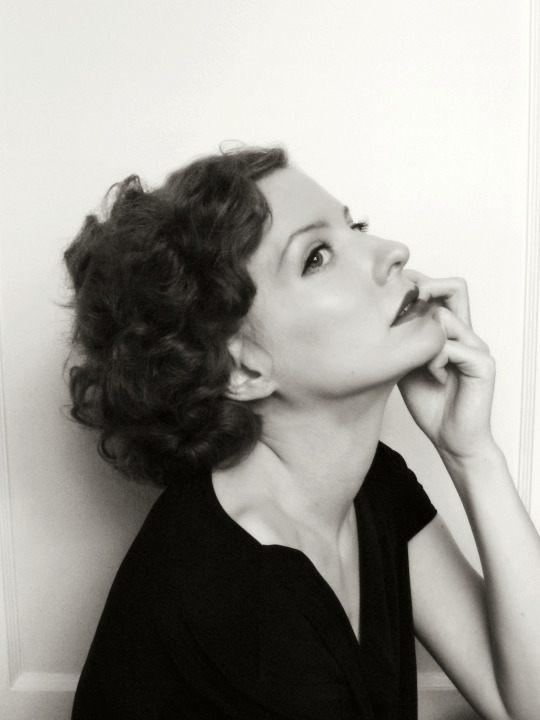
Garbo’s makeup is beautifully consistent across her fifteen years in Hollywood. The application evolved as camera and projection technology advanced, but the shapes remained the same. Starting with Torrent (1926) and her first few silents, her makeup was drawn in higher contrast with heavier lines. In the late silents and her first few talkies, the lines were softened with more gradients in her eyeshadow and lipstick, and film cameras and lighting rigs began to capture more subtle gradations of light and dark. Throughout the rest of the 1930s all the way to Two-Faced Woman (1941), the lines were thinner and more delicate and paired with further shading, but still with a graphic effect.

from Torrent (1926), The Mysterious Lady (1928), and Conquest (1937)
The theme of her iconic look was a dreamy sensuousness, and I personally love that her makeup design is so simple. If applied properly it could be flattering on any face.
Read on after THE JUMP
Garbo wore a heavy line across her lashline, usually the darkest drawn element on her face. If you had the eyelashes of a mortal this line would be too heavy, but we’re talking about Garbo here. I put on a full strip of falsies.
The line elongates the eye, much like a cat-eye flick, but it extends down and out to create a sultry-but-kind look. (Note: this liner style is currently en vogue in Japan right now & I think it’s overdue for a comeback on this side of the Pacific.) On the outer edge of the lower lashline a lighter line is drawn from the end of the upper line to the lower lashline, forming a small triangle. This finishes off the elongation of the eye. To make it more striking, you can fill in the triangle with a lighter nude liner.
On the lid, Garbo’s crease was emphasized sharply. Across the makeup eras described above, first it was a deep line that met the eyeliner in the corners, then a more natural gradient still with a cut crease, and then back to a distinct line, but applied with a much lighter hand.
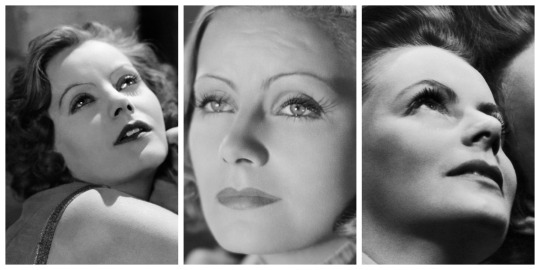
from Flesh and the Devil (1926), Anna Christie (1930), and Two-Faced Woman (1941)
Her eyebrows were plucked and drawn thinly, as was the style at the time. Regardless, Garbo usually followed her natural brow shape.
Garbo’s skin was described as remarkably flawless; Louise Brooks called it “petal-like.” So, a good powder is a must. Reportedly, she used a Max Factor foundation with a silver tint so the light would reflect strongly off her face. (This also probably explains why in a few of her films her face is so much brighter than her usually quite tan neck and shoulders.)
For blush, I used a simple dusty pink because her cheeks are much fuller than mine--so I didn’t want to add dimension. Dusty pink was also her favorite color. Like really.
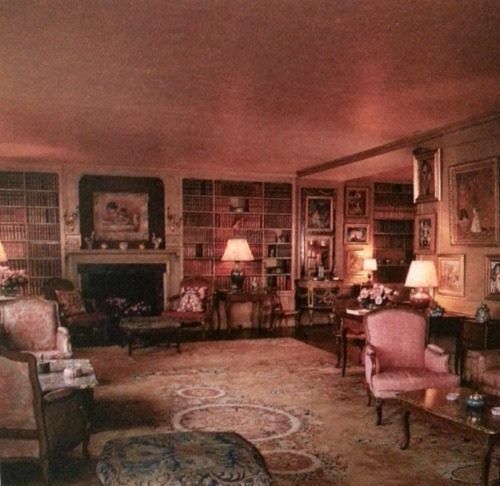
Garbo’s New York apartment was decked out ceiling to carpet almost exclusively in rose pink!
Her lips were lined in a single tone following her natural shape. My lips are fuller but not as wide as hers so I drew them out a bit at the edges with a lip brush and filled in the shape in this method:
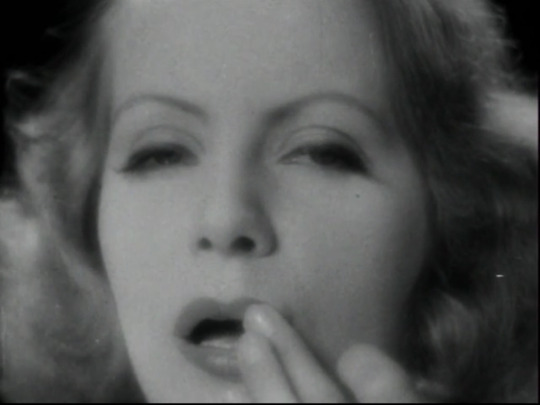
from The Kiss (1929)
Over the past year or so, I’ve experimented a lot with wet-set curling to improve my vintage chops. Many 1930s styles are difficult to achieve and Garbo’s is the least fussy hairstyle I’ve attempted from the period. So, even before the effortless long bob Garbo sported for much of her life, her styling was simple.
There are some accounts that she was a little erratic about working on her image but it must have been some relief that Garbo had close collaborators ironing out the glamor to accentuate her own art. Garbo took acting very seriously without much interest in being a movie star. Time has told that with Adrian as a costumer, Max Factor as a makeup designer, Clarence Sinclair Bull as a portrait photographer, and William H. Daniels as a cinematographer, an adequately sublime, timeless image was created to match her sublime, timeless performances.
Garbo’s Reach
Often when people talk about Marilyn Monroe’s predecessors, they can’t seem to get past her fluffy blonde hair. They draw endless parallels to Jean Harlow, with whom she shares little more than a hair color. Monroe herself idolized Garbo. And it shows if you’re looking for it.
All together, the lazy/sexy ideal is embodied by both women. Where Monroe usually infused this spirit into dizzy comedic roles, Garbo primarily put it to use playing women of mystery. Suffice it to say, both stars have reached an iconic status at least in part because their roles were intertwined so cleverly with their respective public images.
I look to Monroe’s eye makeup as the dead giveaway. Monroe and her makeup artist, Whitey Snyder, created much the same shapes but with gentler lines.

When Garbo first emerged with her long bob, it was admired by fans, but magazine writers were quick to point out that this was unflatteringly long and advised that only Garbo could pull it off. Likewise, Monroe was put down in the press for her too-long unstylish hair--some journalists even comparing her to a dog. (The ideal then being closer to Elizabeth Taylor’s neatly coiffed short curls.) Funny that both styles are considered almost universally flattering today.
According to Katharine Cornell, when Garbo was considering a return to the screen she wanted to star alongside Monroe. Garbo confided that she wanted to play Dorian Gray with Monroe as Sibyl Vane. If you’re queer-hearted like myself (and Garbo) it’s devastating that we never got that film.
I suppose I’ll sign off now with tears in my eyes for what could have been and for the mutual appreciation that Marilyn Monroe probably never knew about.
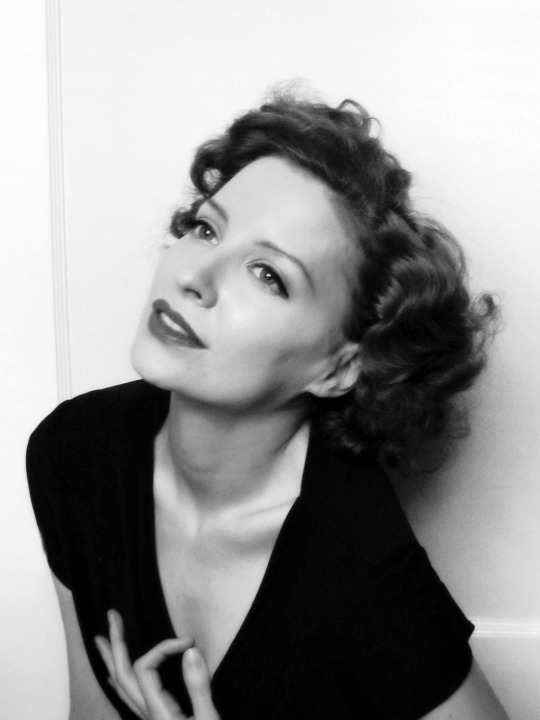
#greta garbo#garbo#cosplay#closet cosplay#classic film#classic movies#Filmstruck#silent film#silent movies#silent era#Adrian#marilyn monroe#hollywood#1920s#1930s#vintage#vintage inspired#vintage makeup#besame#besame cosmetics#film essay#film#movies#photography
182 notes
·
View notes
Text
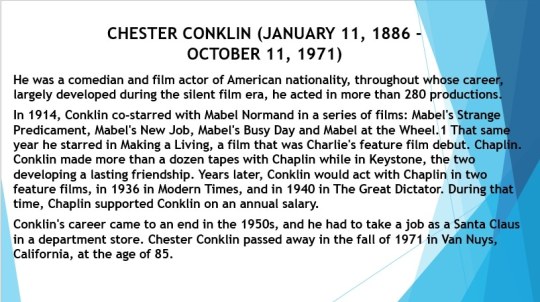




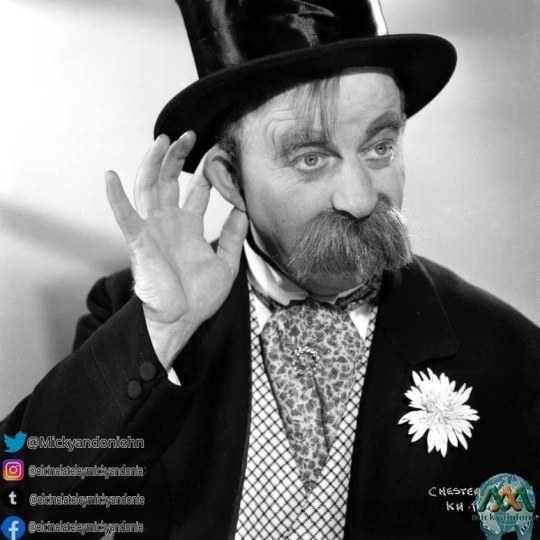
CHESTER CONKLIN.
Filmography
1914 The Masquerader
1914 Mabel at the Wheel
1914 Caught in a Cabaret
1923 Anna Christie
1924 Greed
1926 Behind the Front
1926 Say It Again
1926 The Duchess of Buffalo
1926 Midnight Lovers
1926 We're in the Navy Now
1927 Cabaret
1928 Gentlemen Prefer Blondes
1928 Varsity
1928 The Haunted House
1928 Taxi 13
1929 The Virginian
1929 Marquis Preferred
1929 House of Horror
1931 Her Majesty Love
1935 Keystone Hotel
1936 modern times
1937 Every Day's a Holiday
1939 Hollywood Cavalcade
1940 The great dictator
1941 Sullivan's Travels
1942 Sons of the Pioneers
1944 The Great Moment
1944 Hail the Conquering Hero
1945 Micro-Phonies
1946 The Hoodlum Saint
1947 The Perils of Pauline
1949 Jiggs and Maggie in Jackpot Jitters
1949 The Golden Stallion
1952 Doc Corkle
1955 The Beast with a Million Eyes
1966 A Big Hand for the Little Lady.
Créditos: Tomado de Wikipedia
https://es.wikipedia.org/wiki/Chester_Conklin
0 notes
